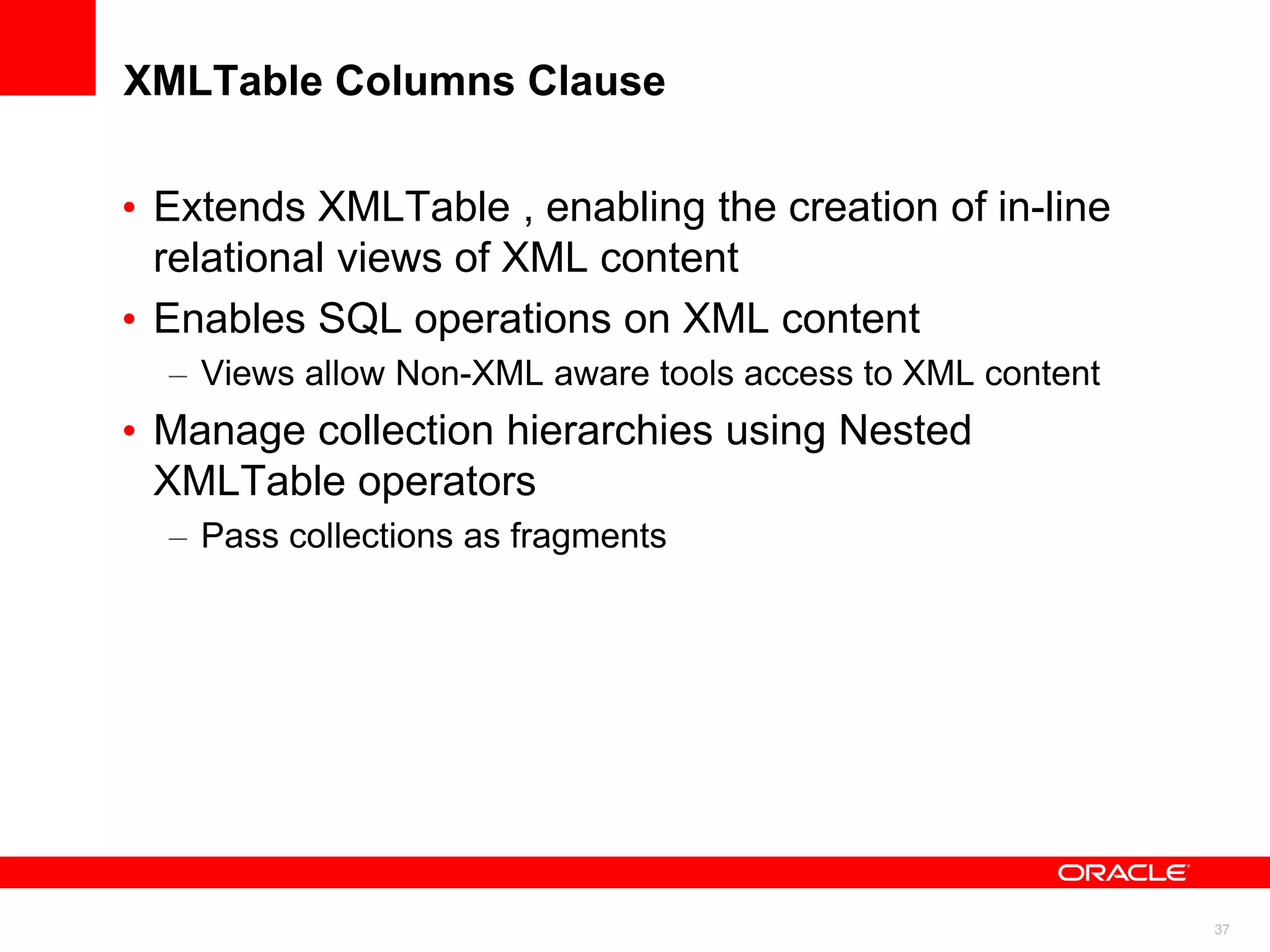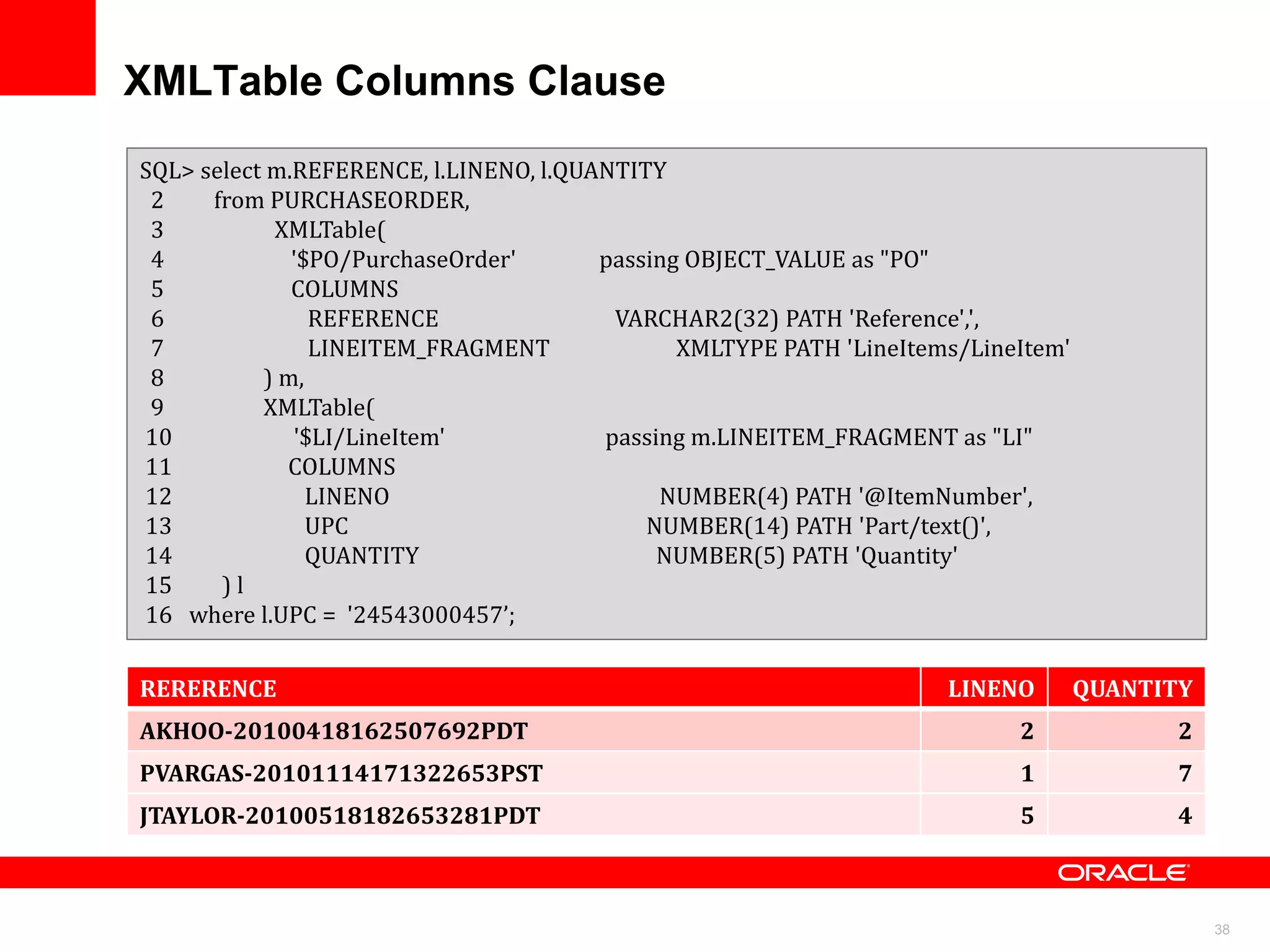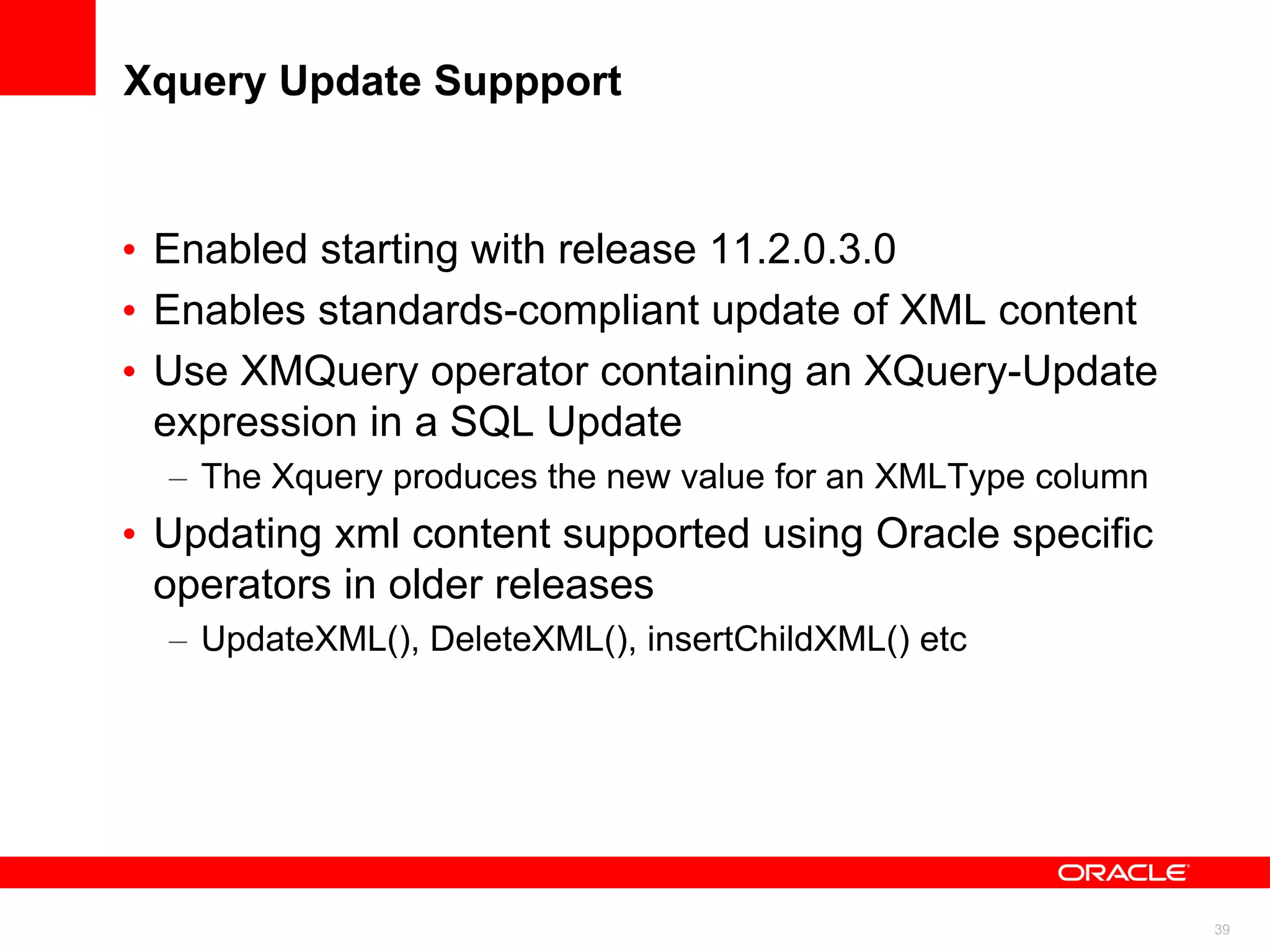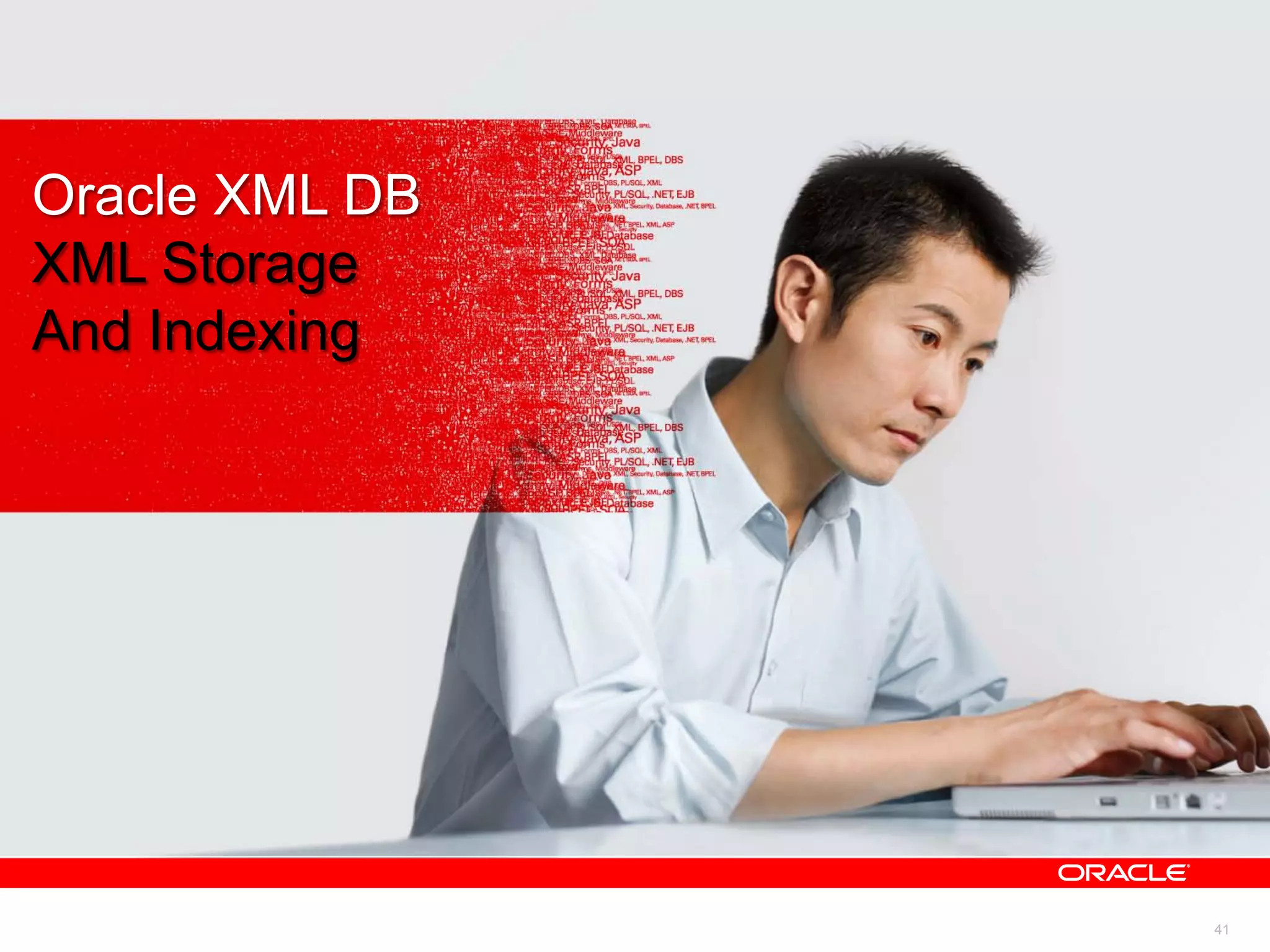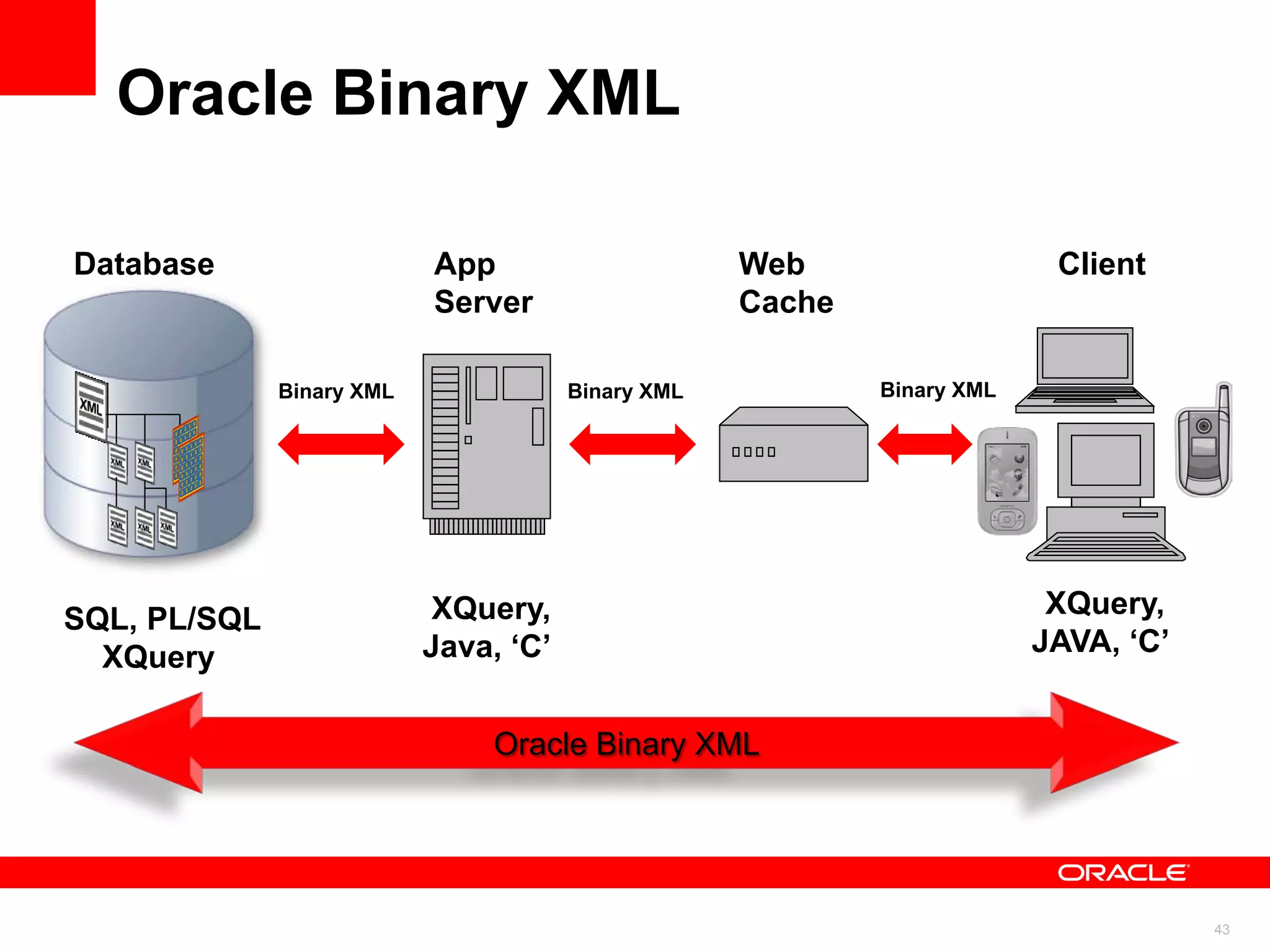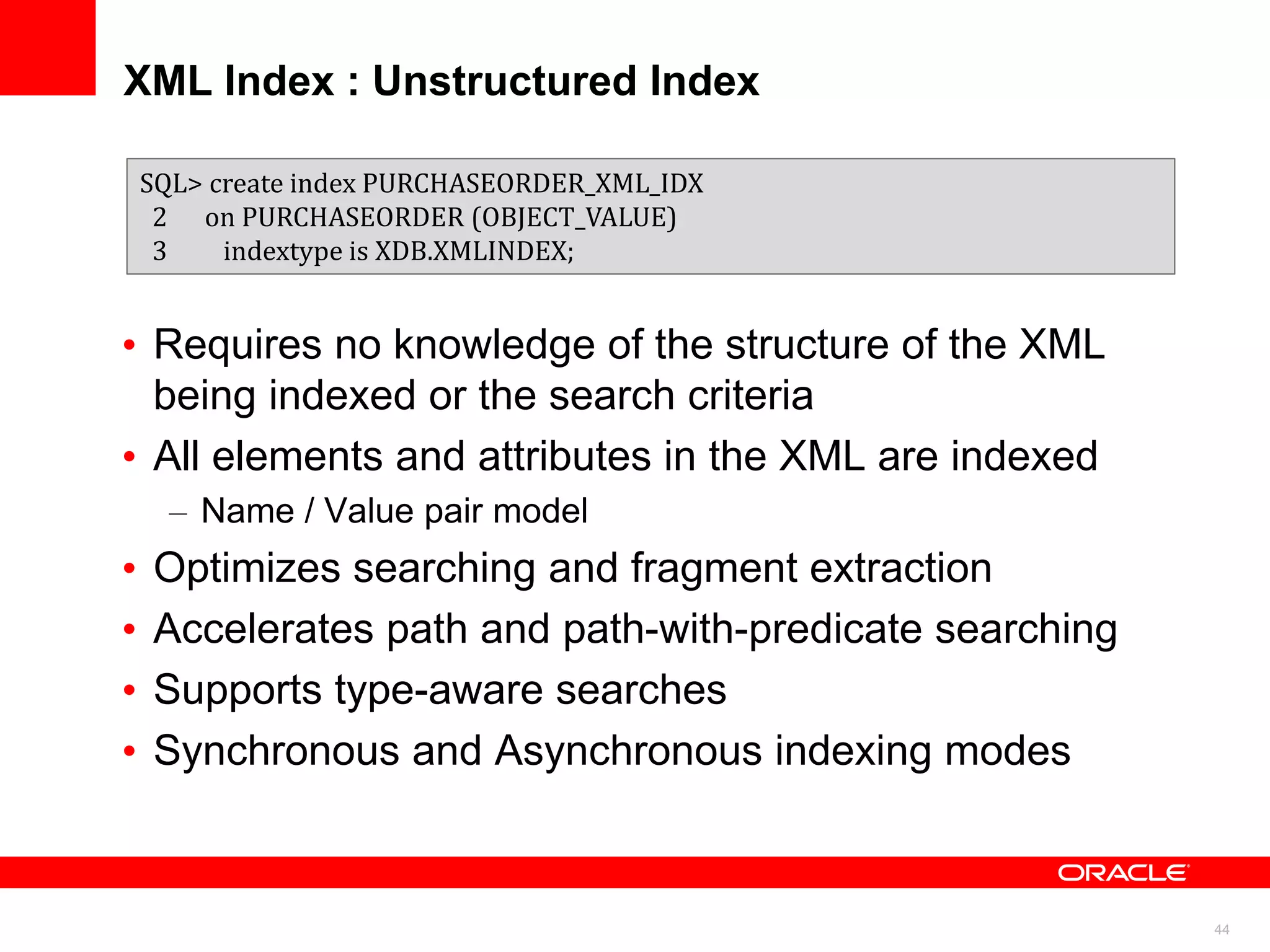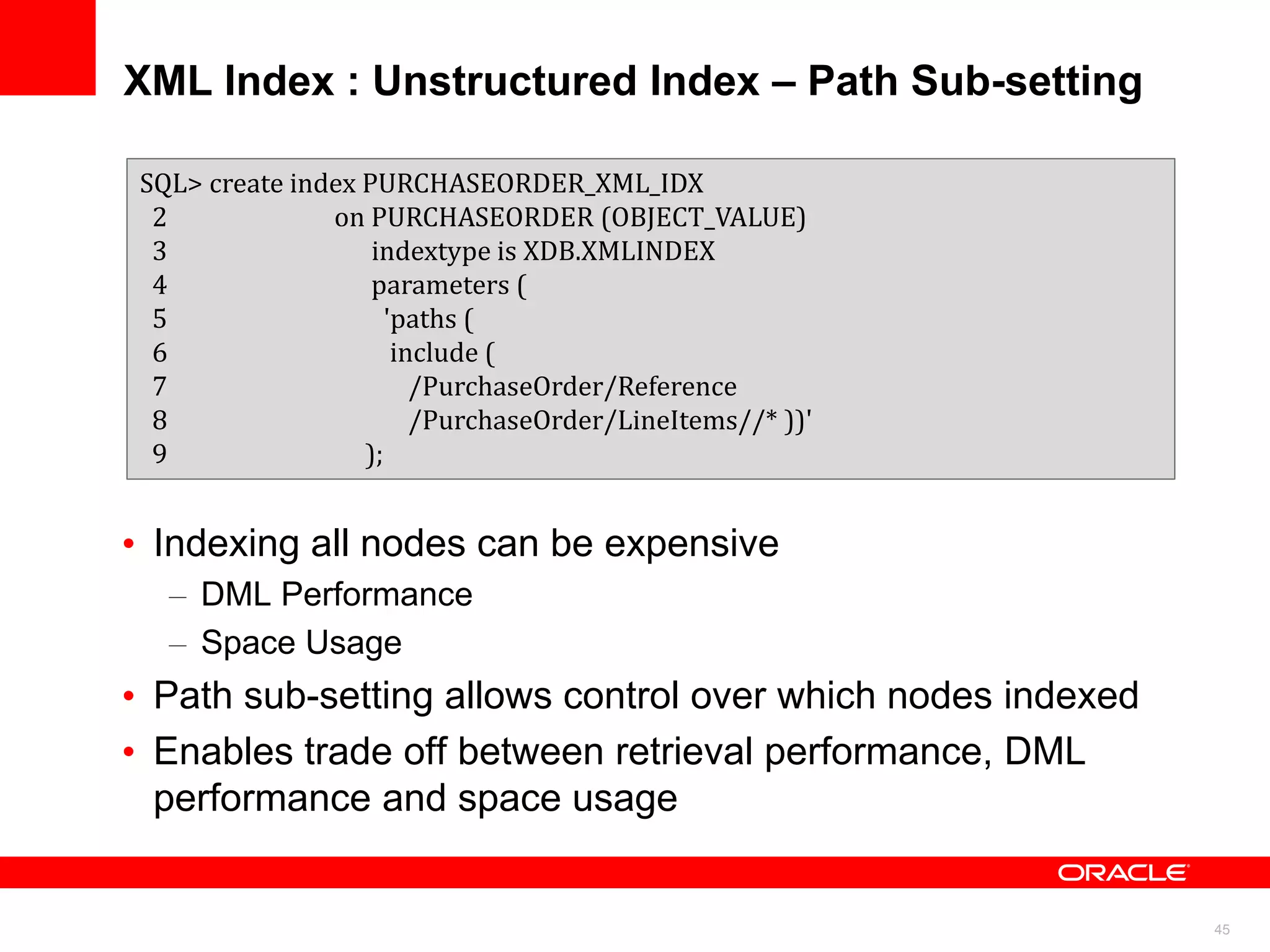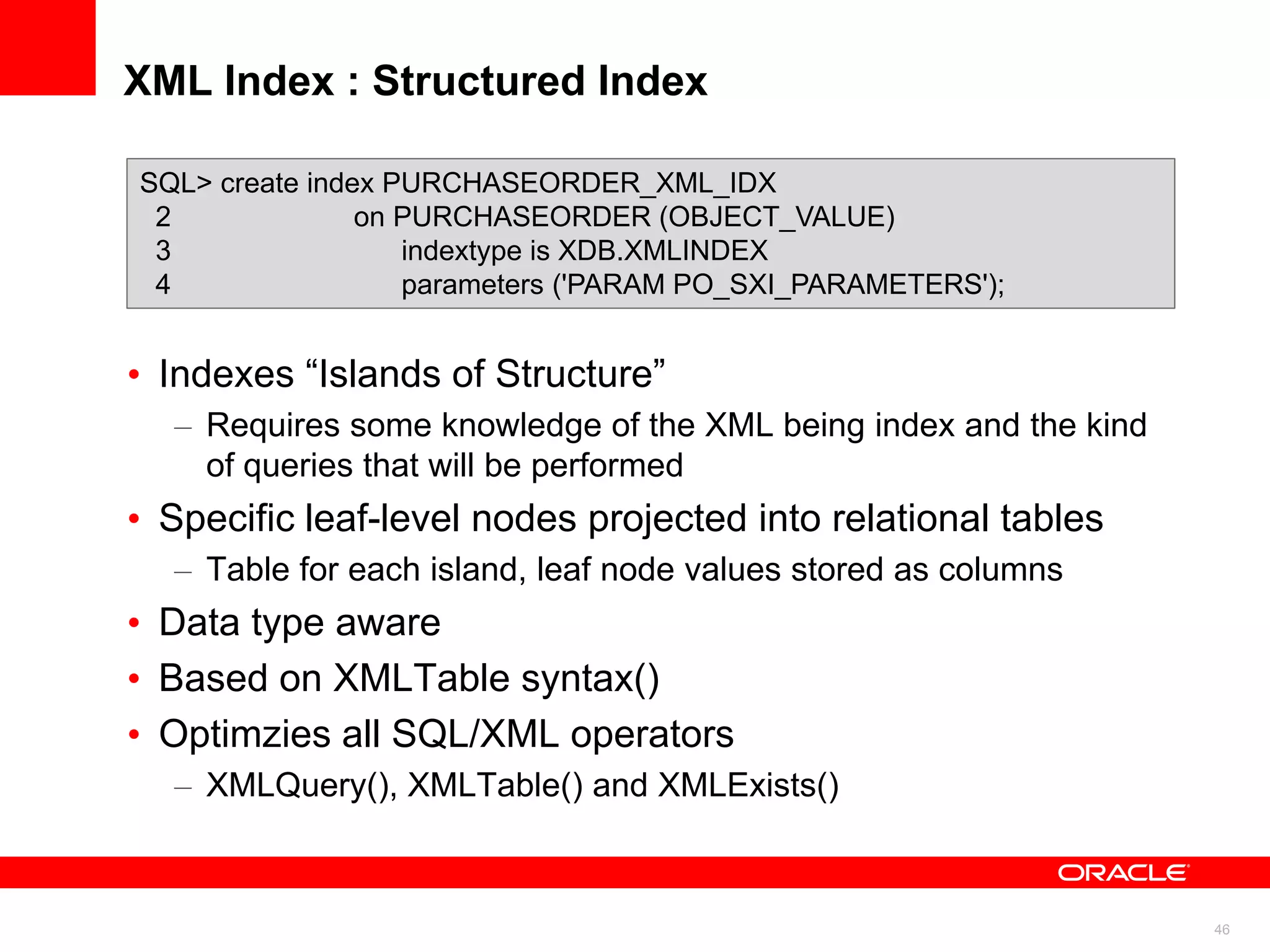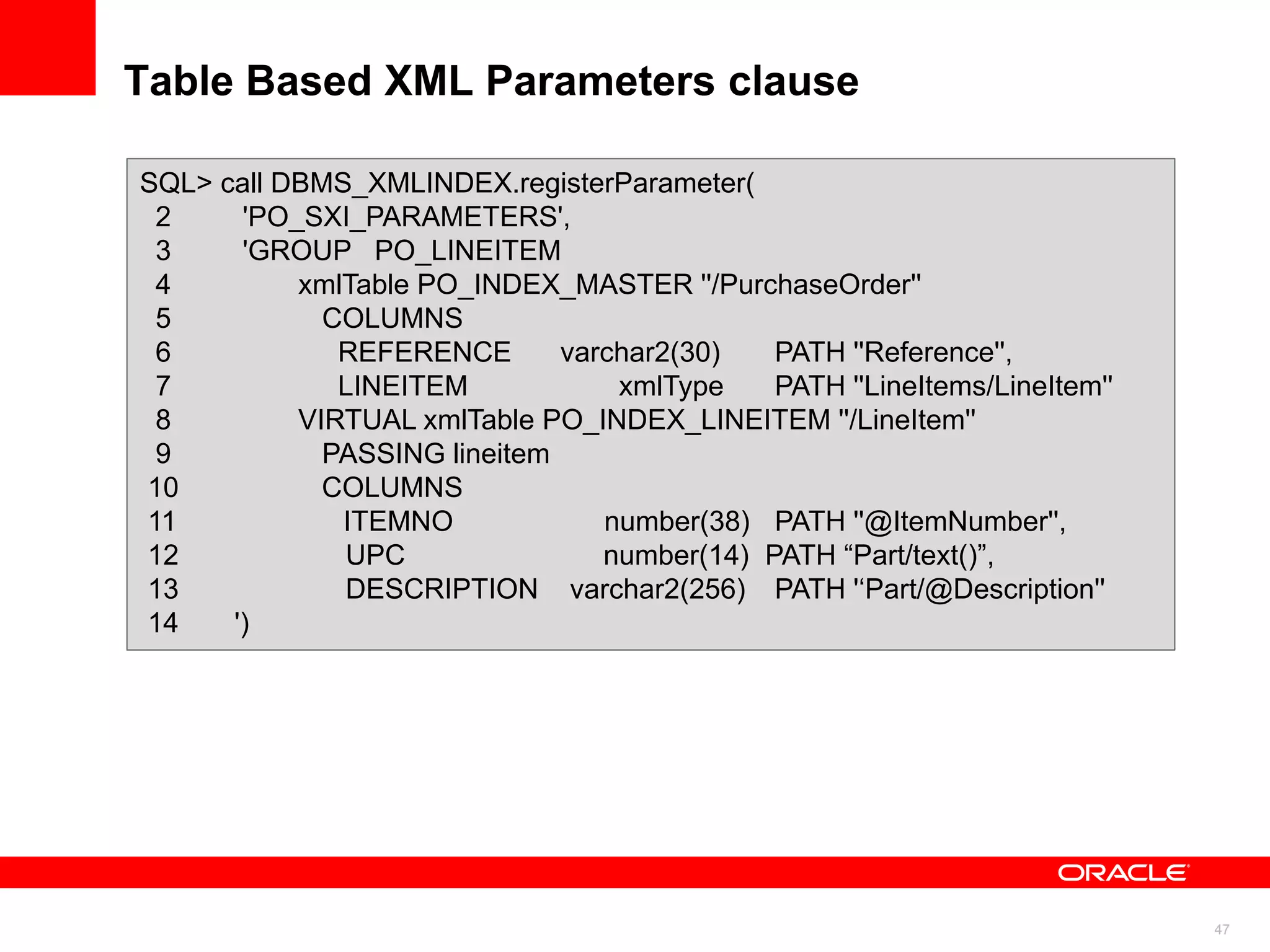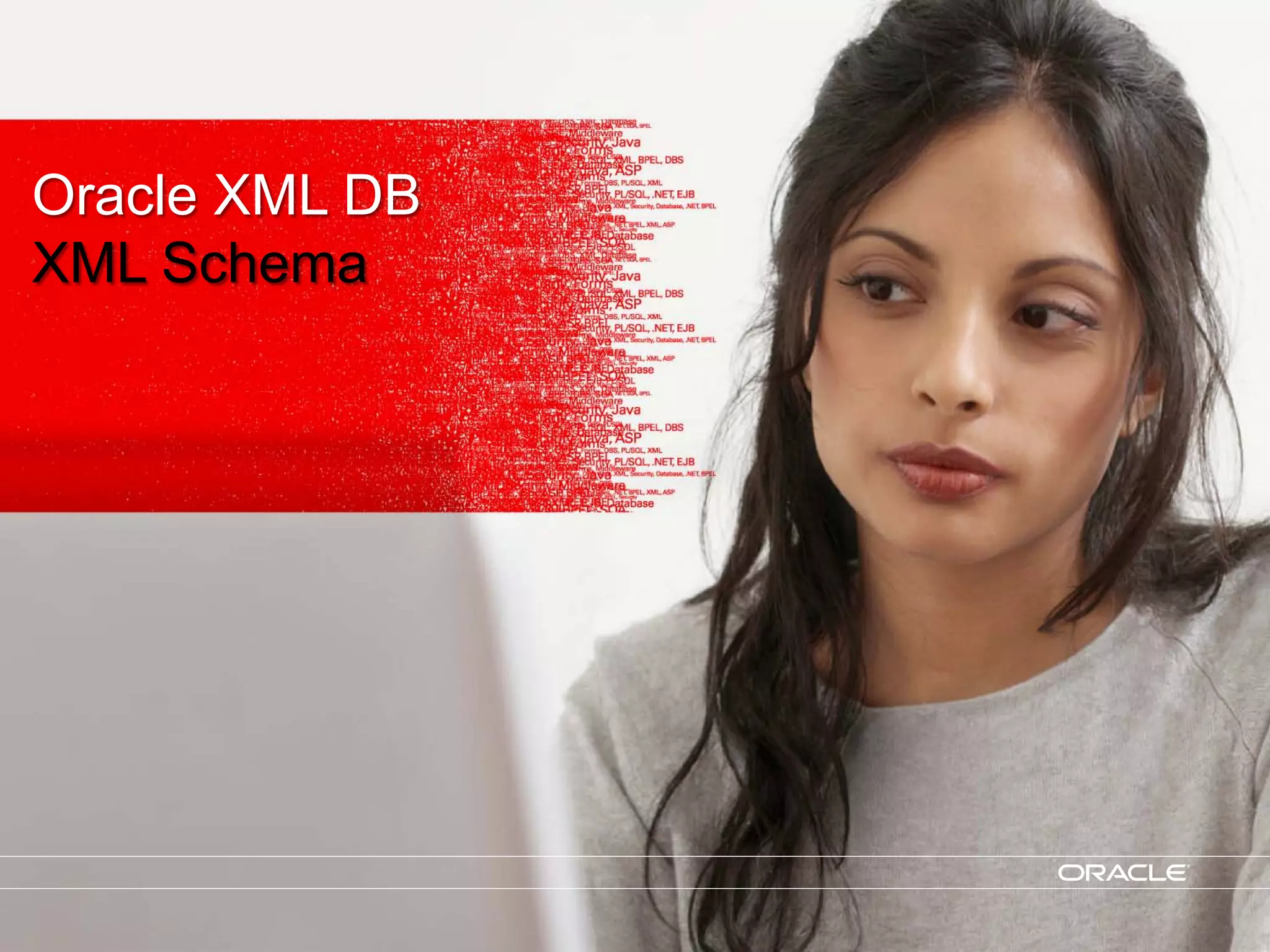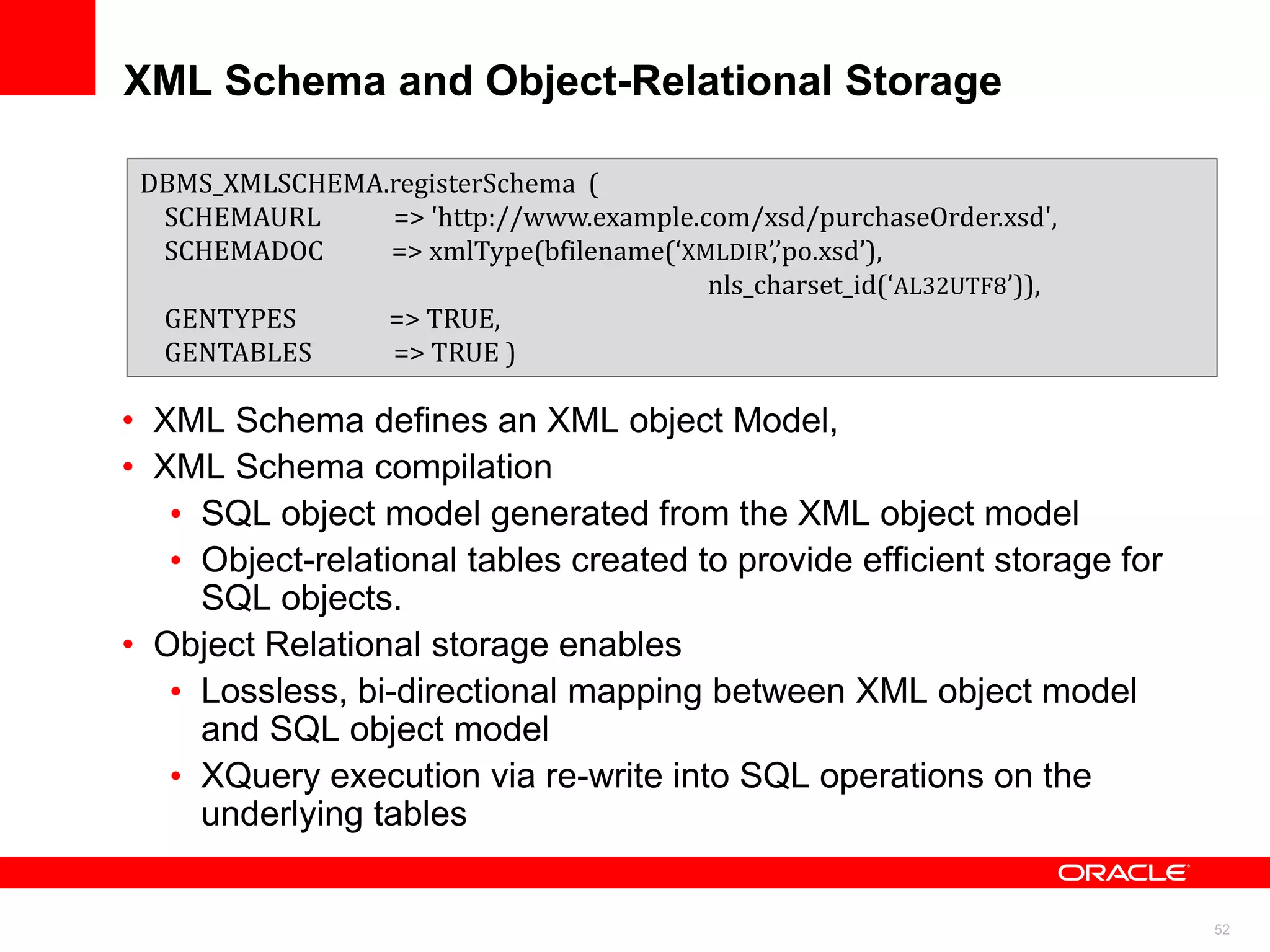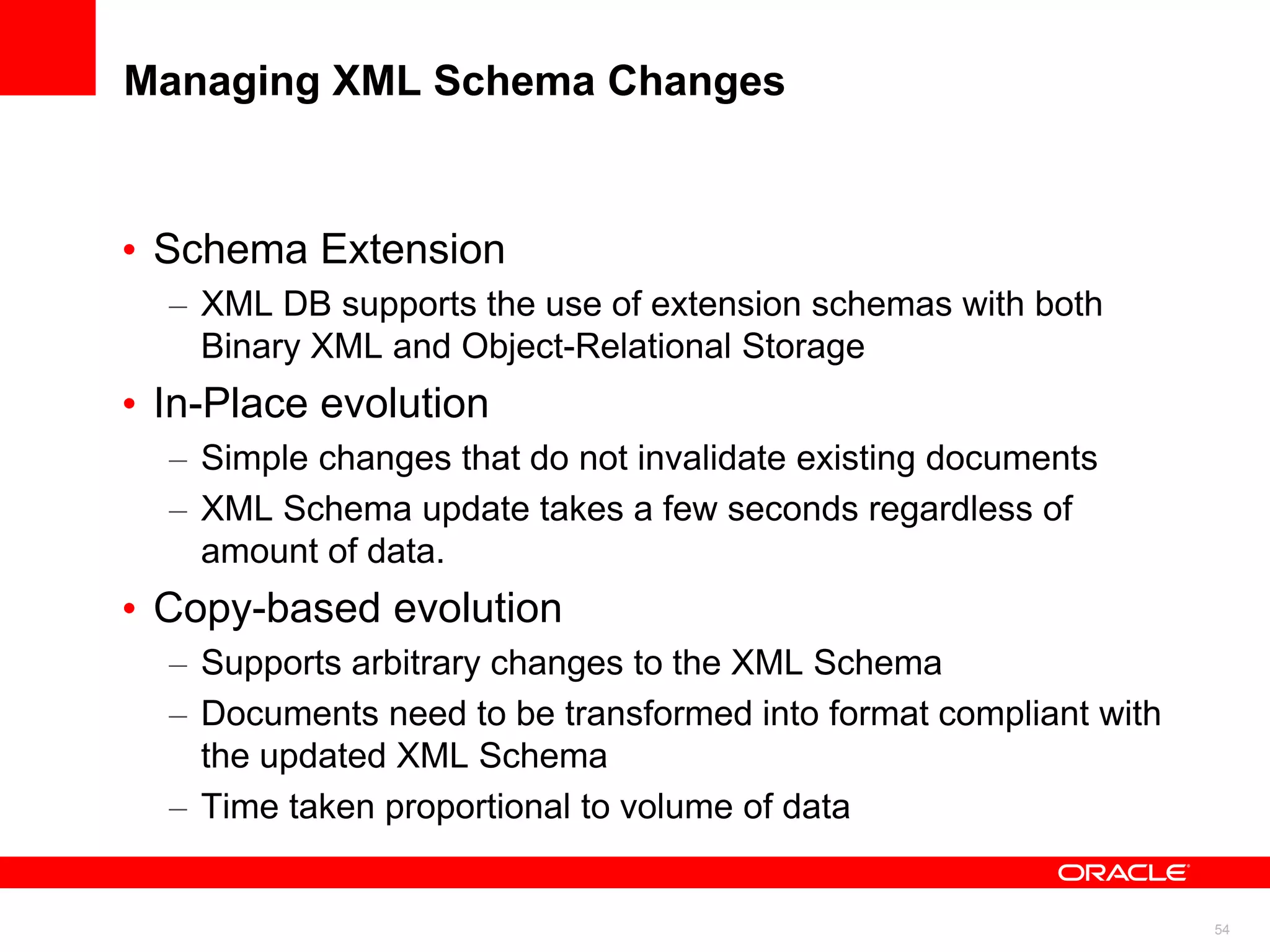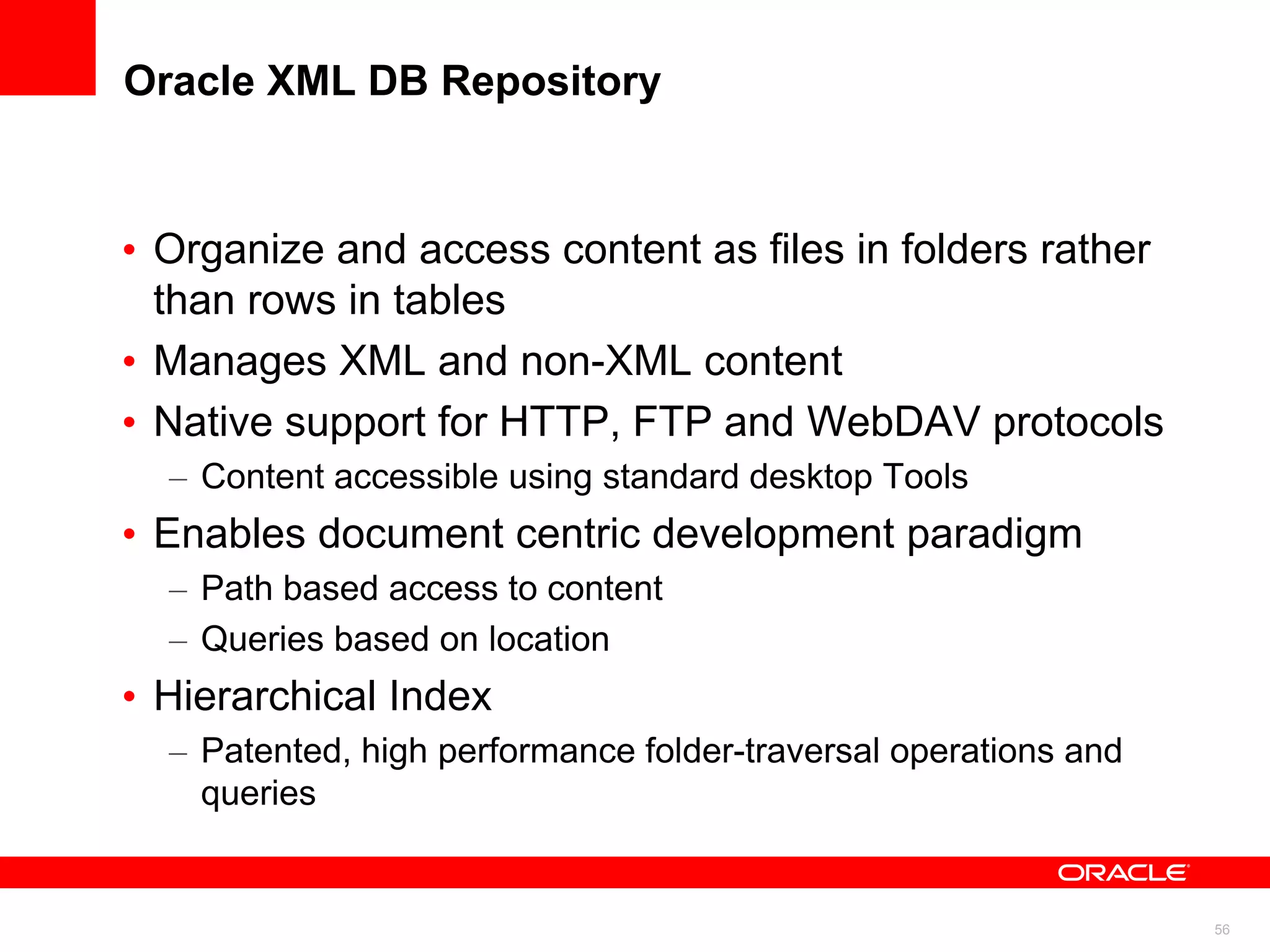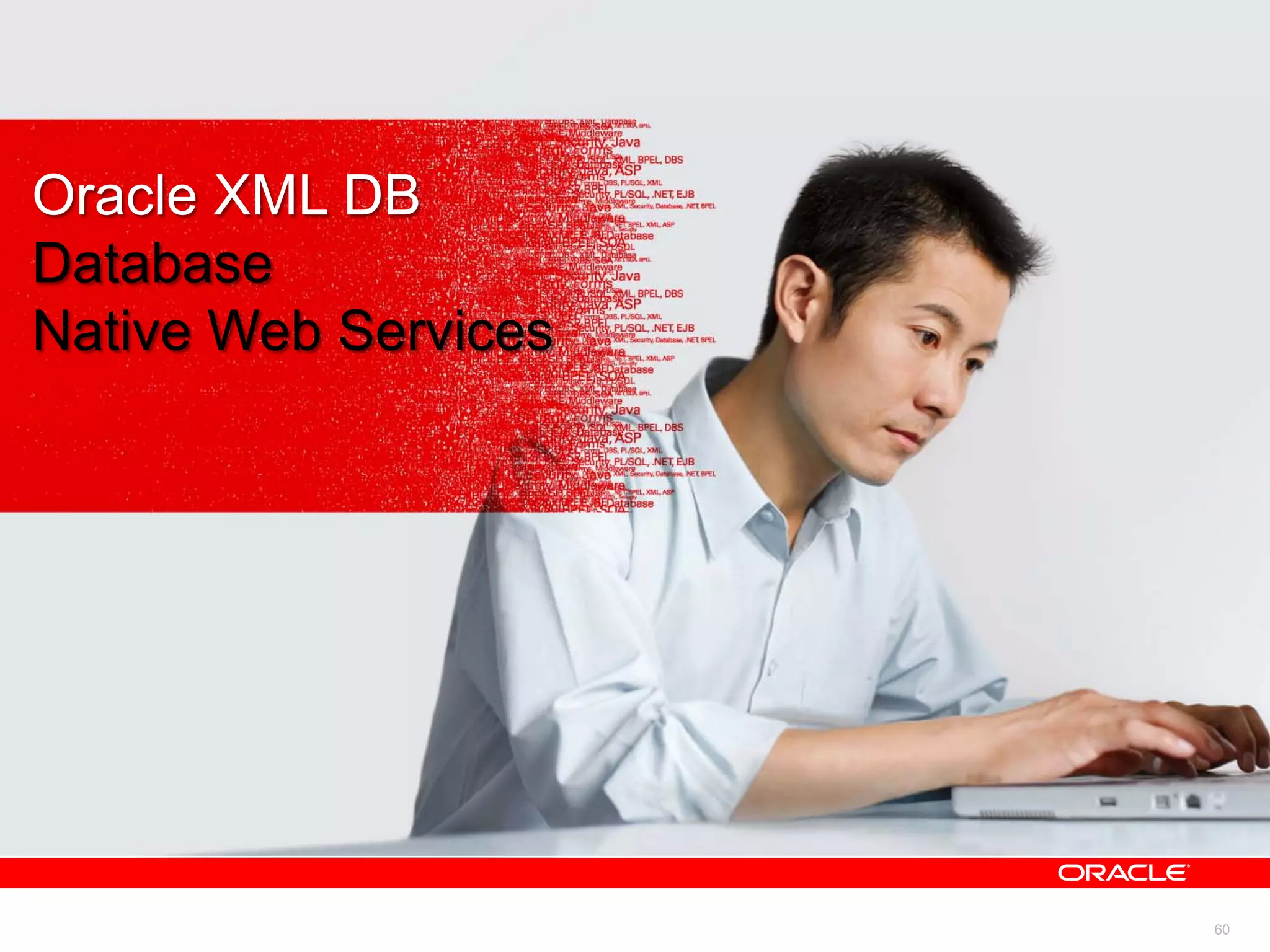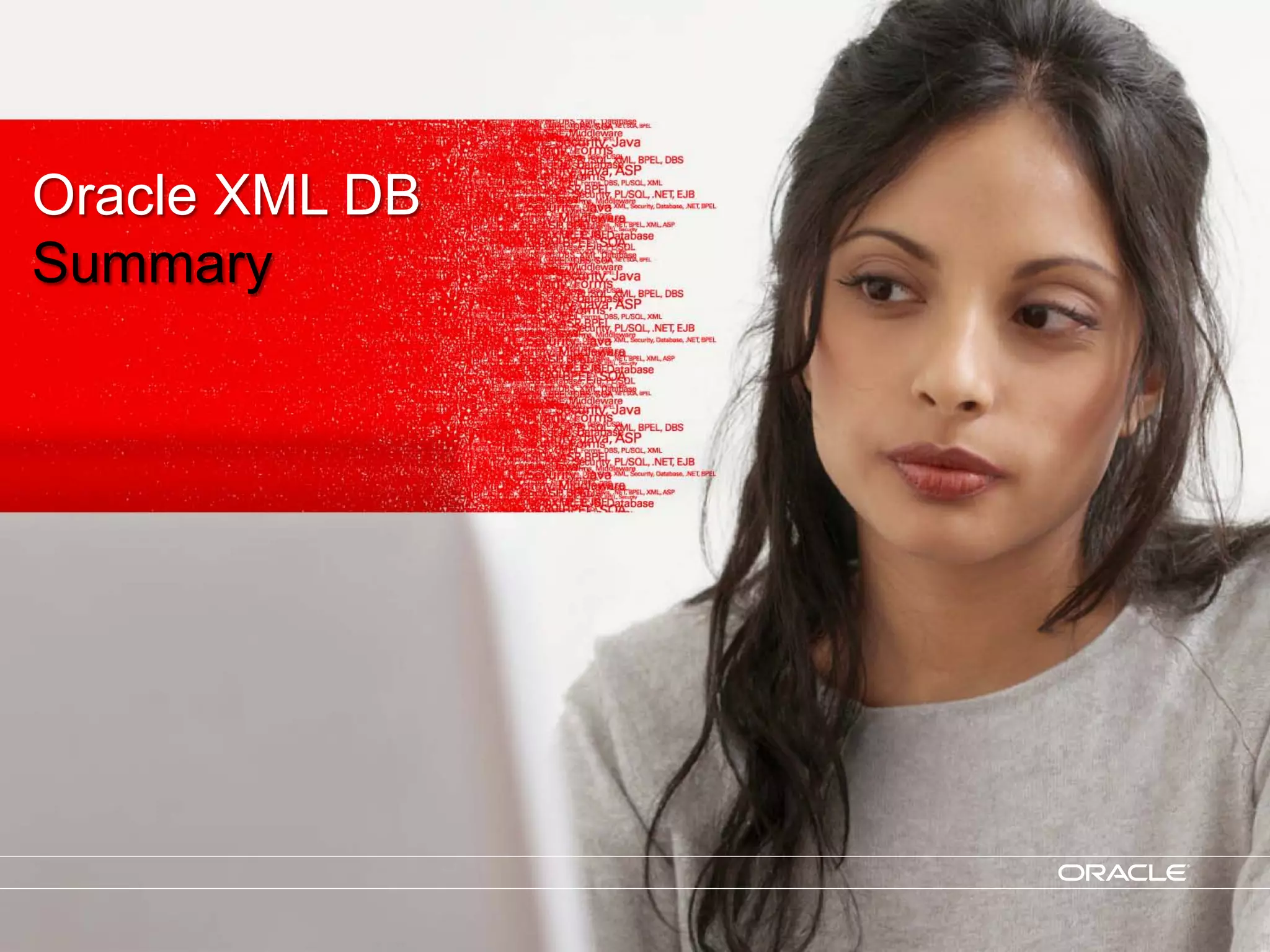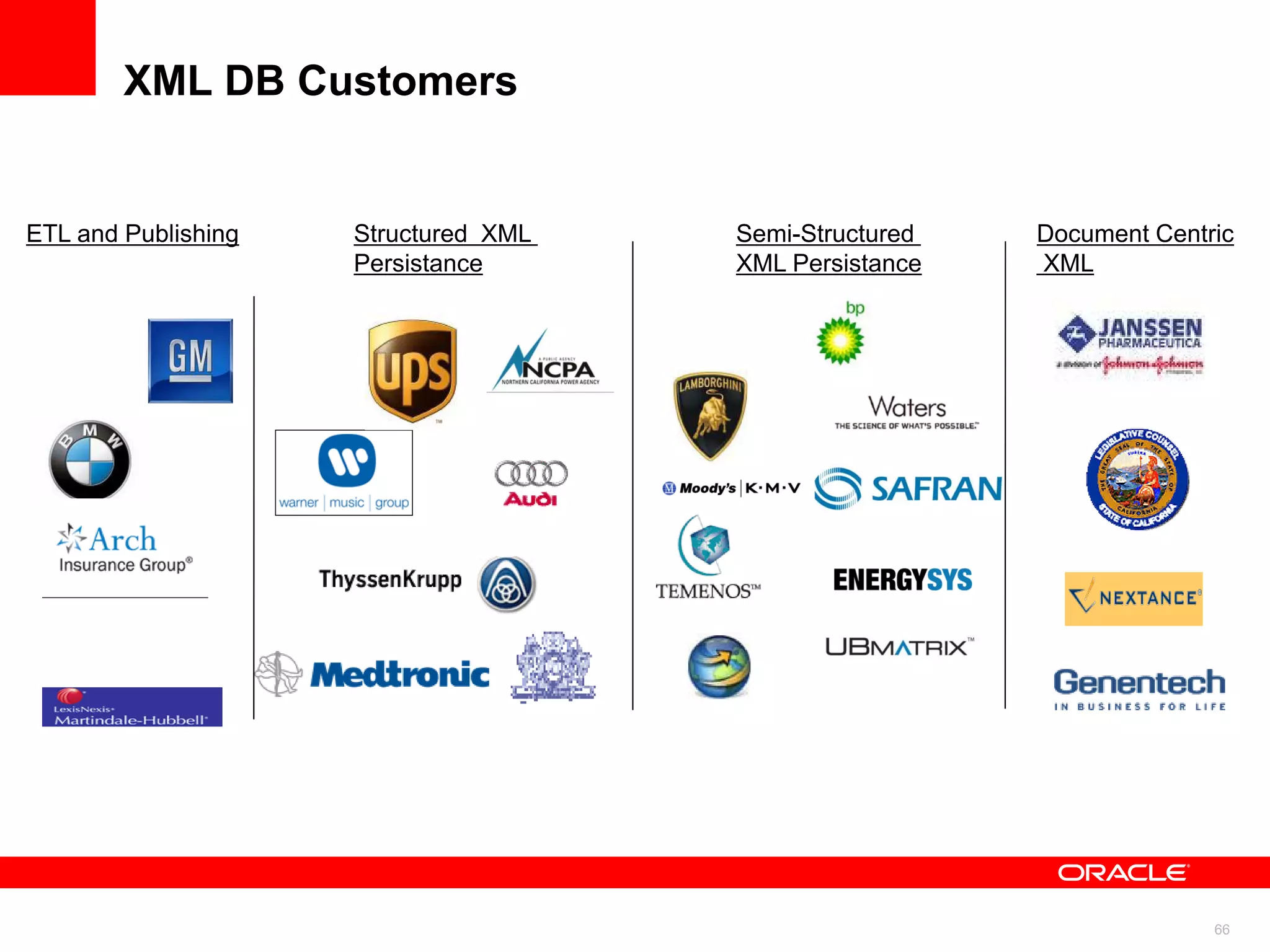An introduction to Oracle XML DB in Oracle Database 11g Release 2 was presented. Key points include: 1) Oracle XML DB allows for the storage, indexing, and querying of XML data and documents within the database using the XMLType data type and XQuery. 2) XML is widely adopted for data exchange and content management due to open standards and its flexible yet verifiable data model. 3) XML data can be loaded into the database using SQL Loader or by specifying files using the BFILE constructor with a directory object.
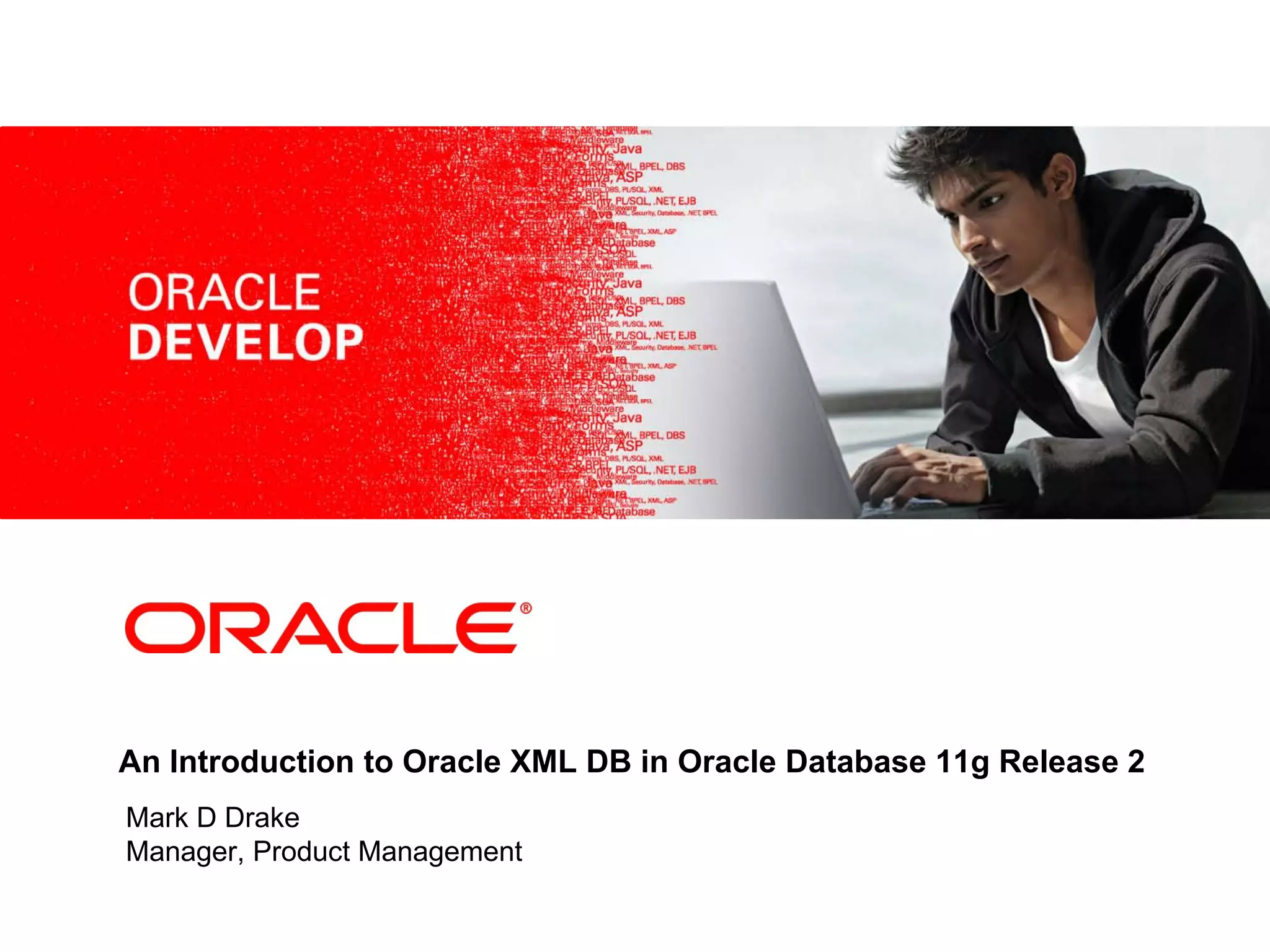
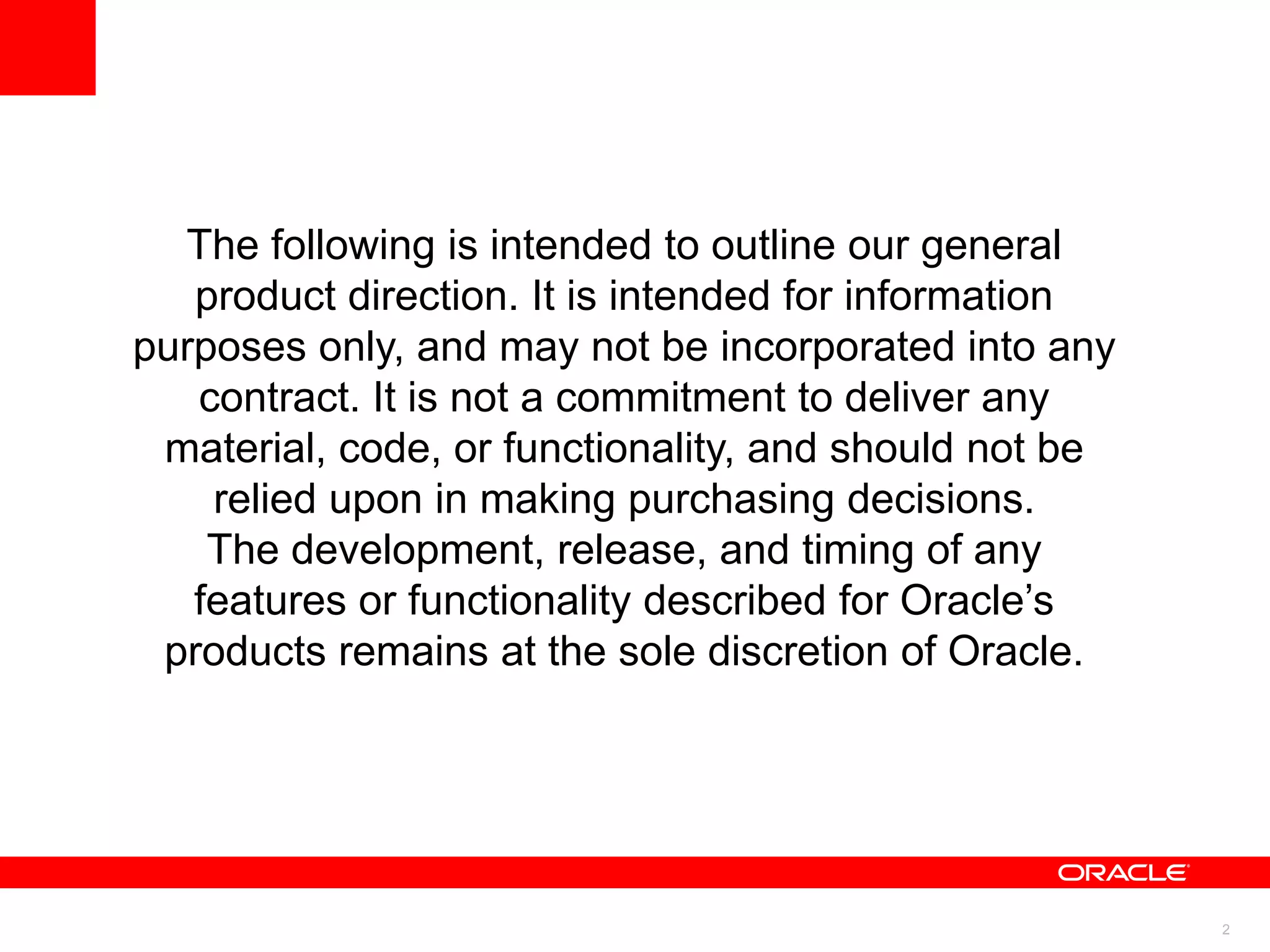
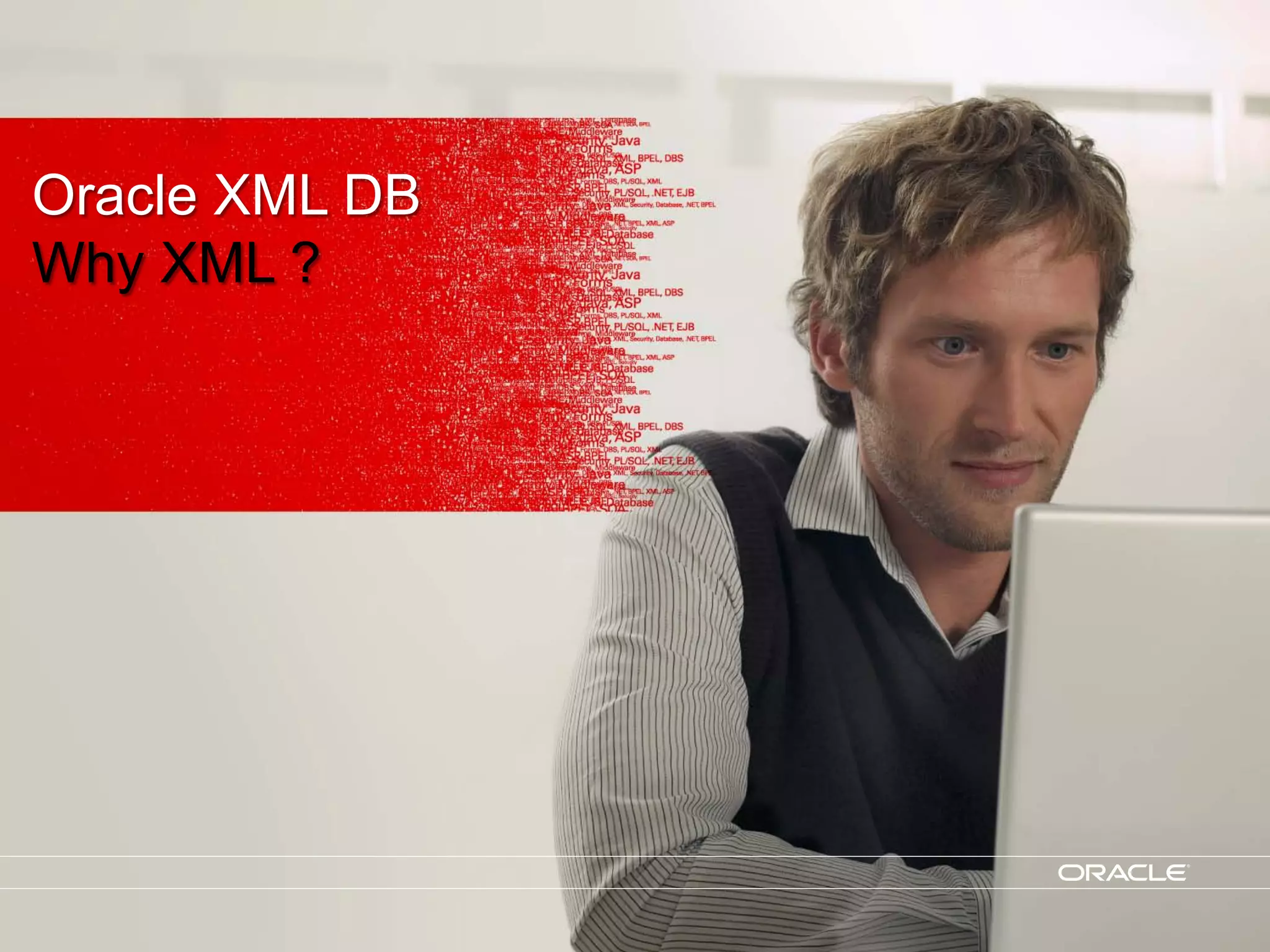
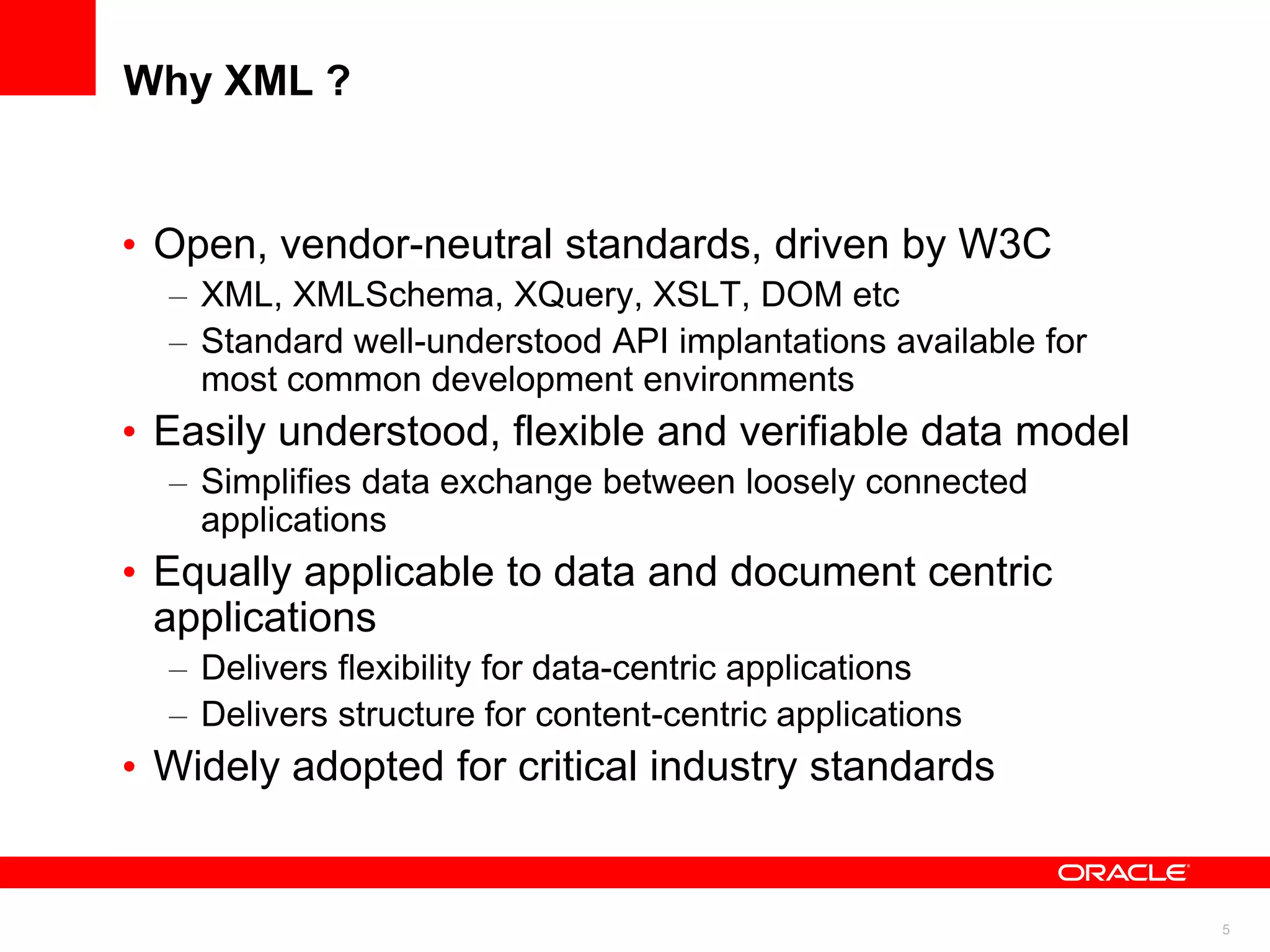
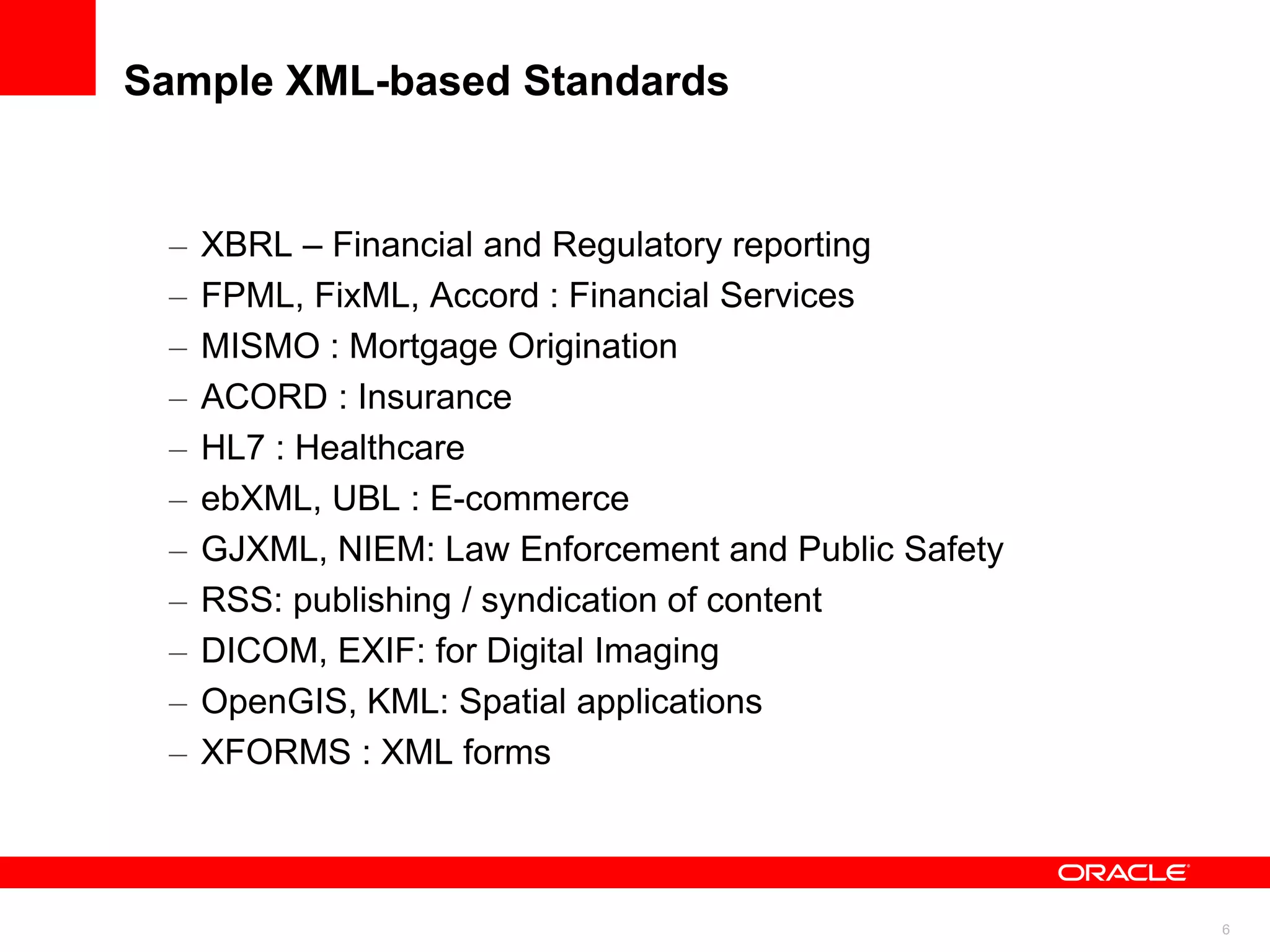
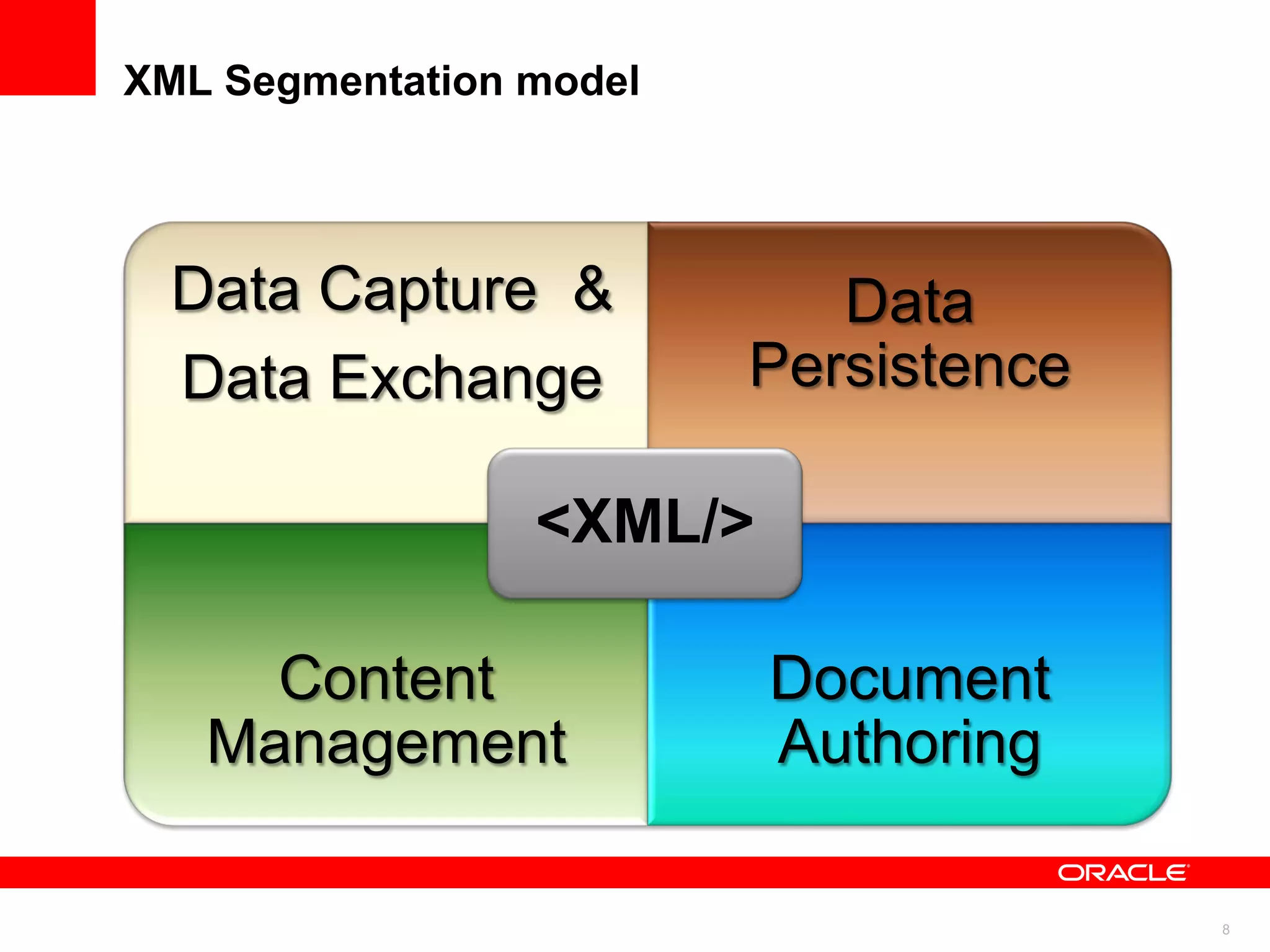

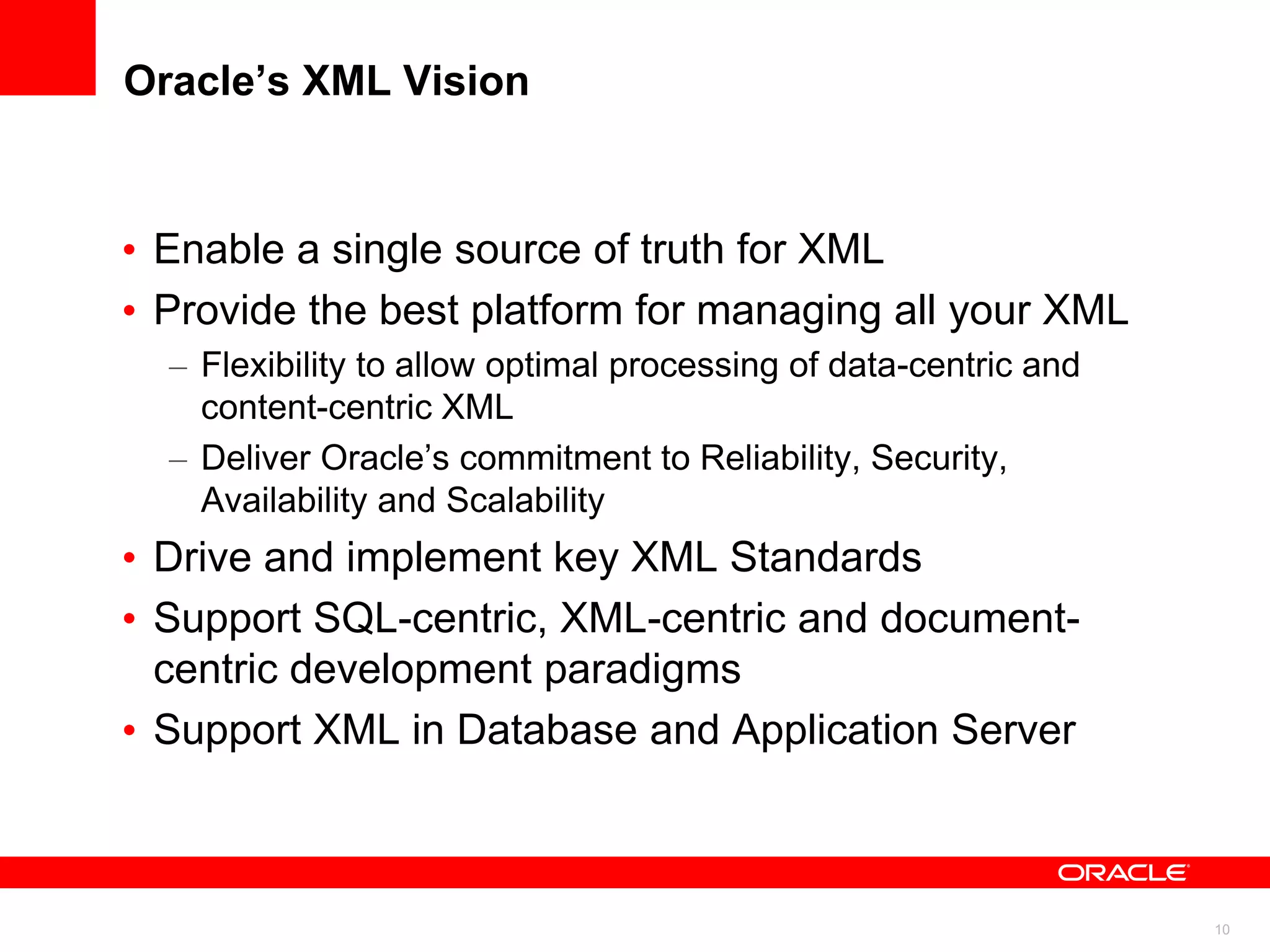
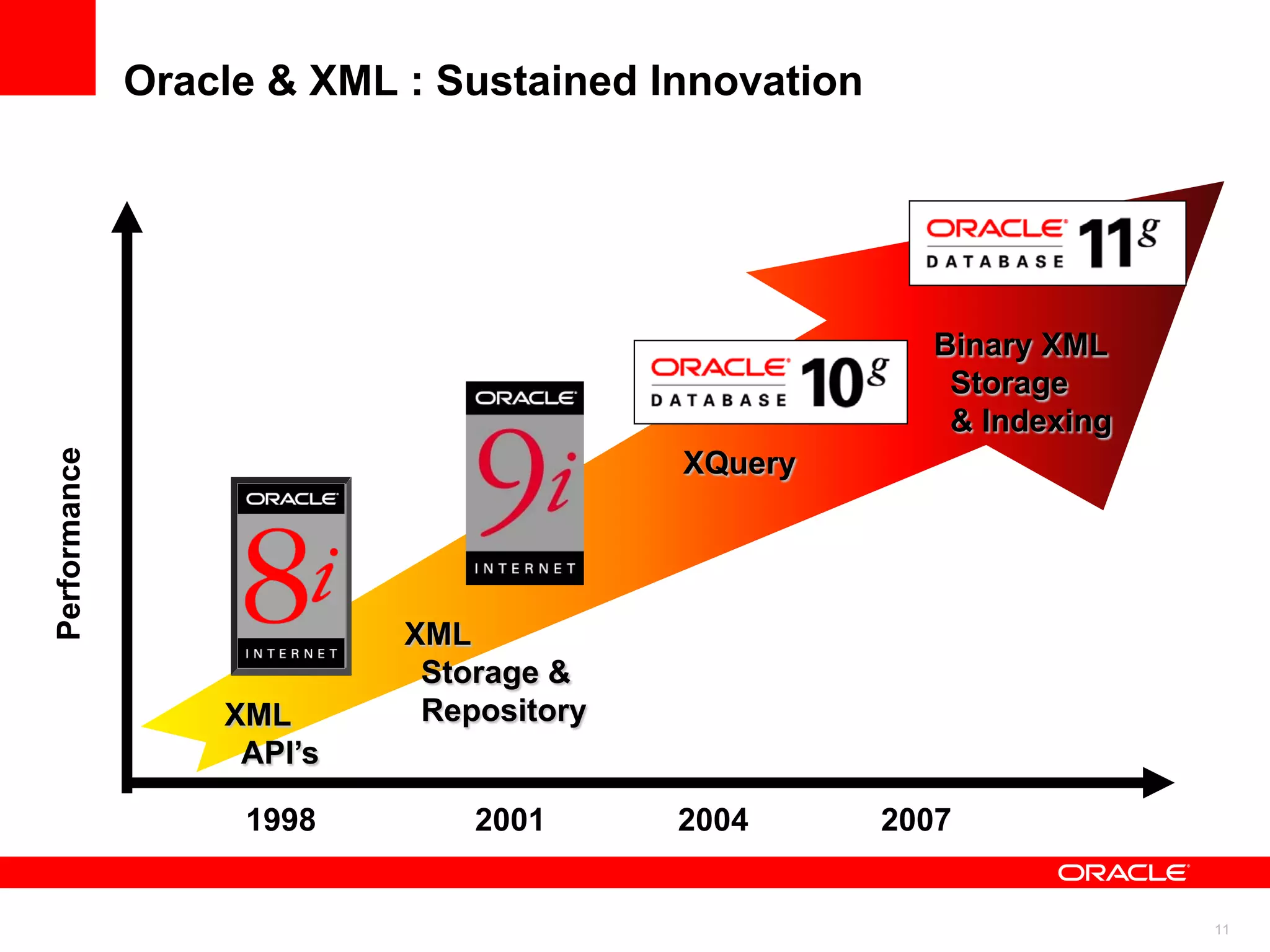

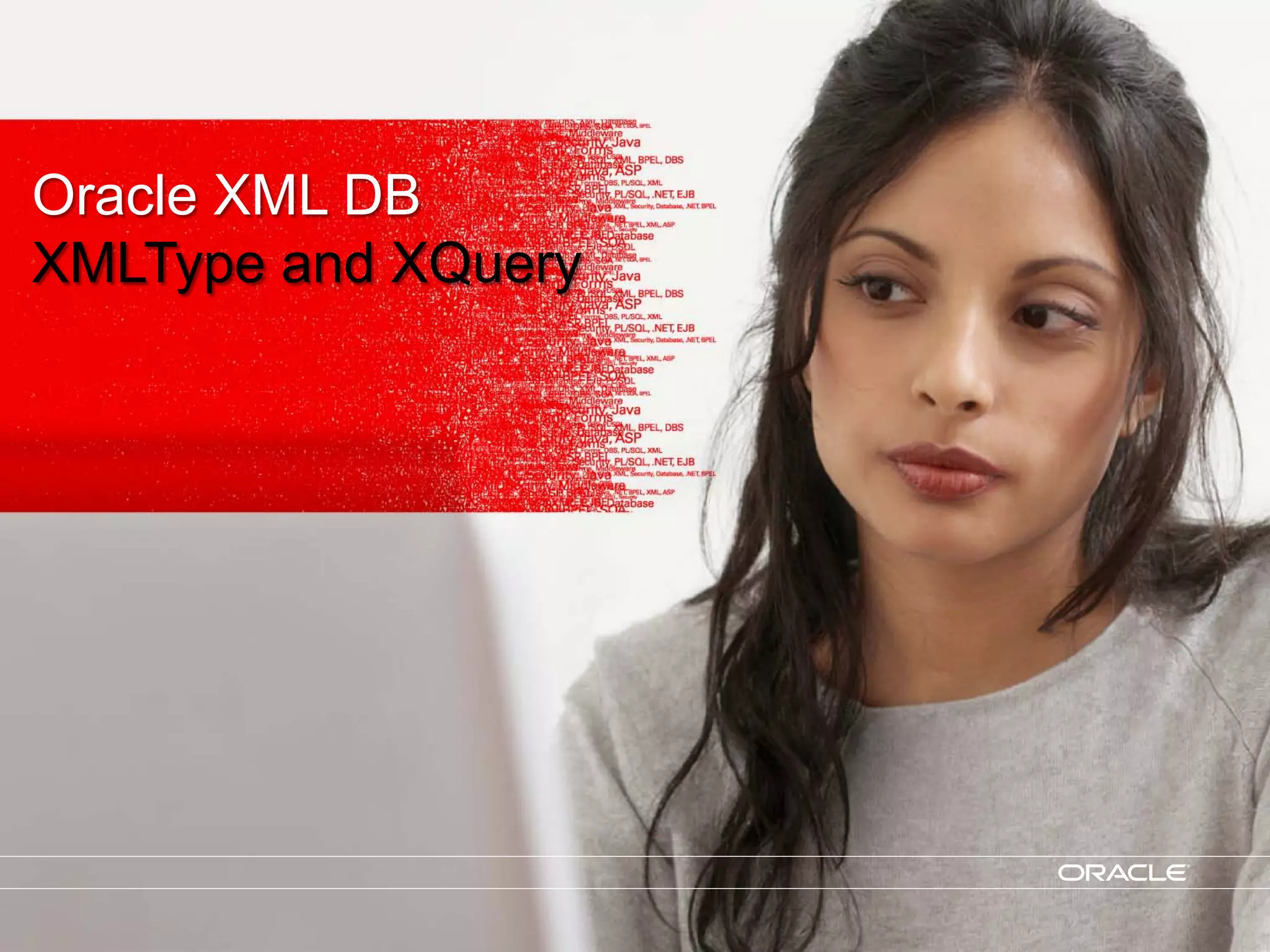
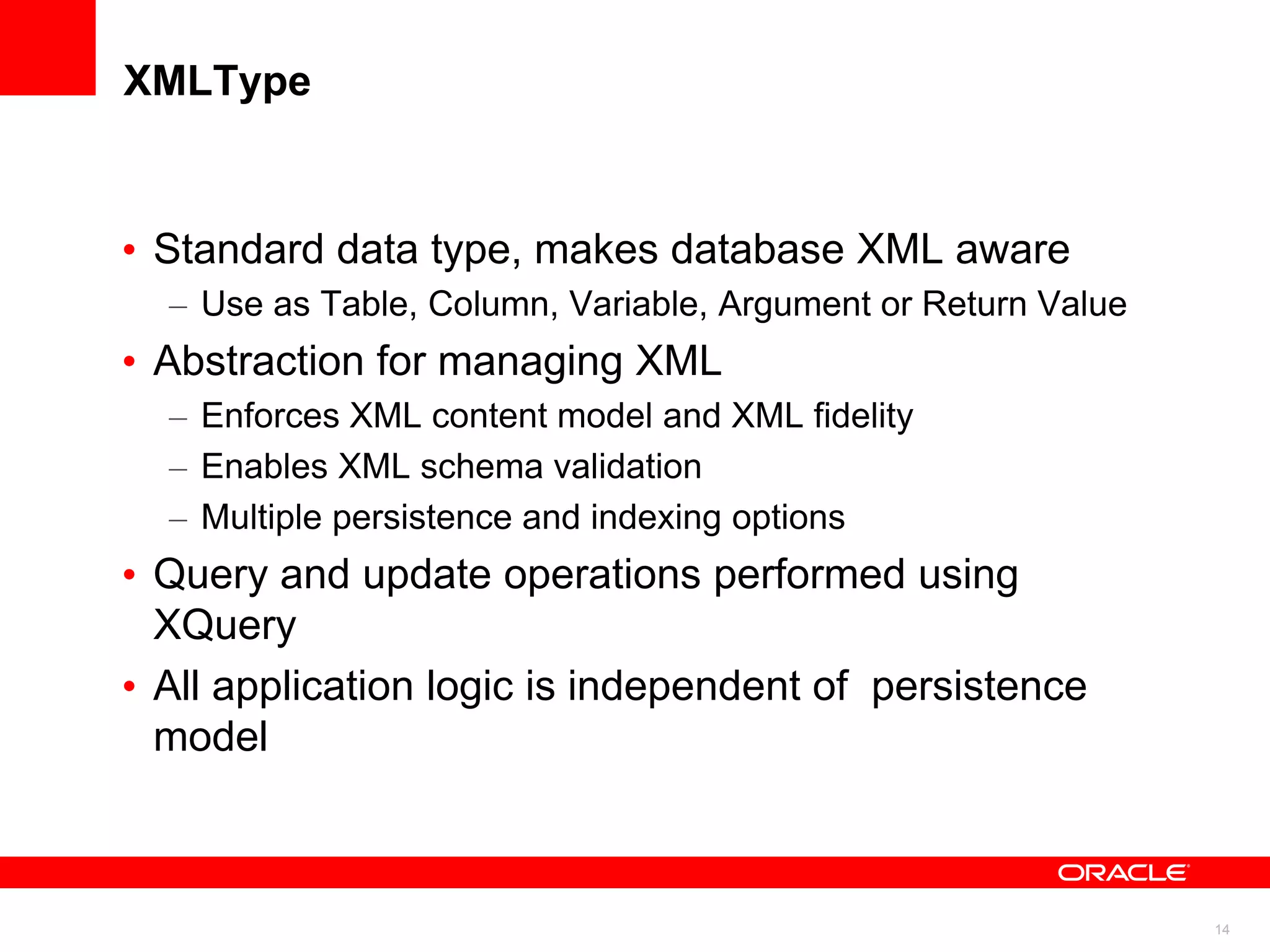

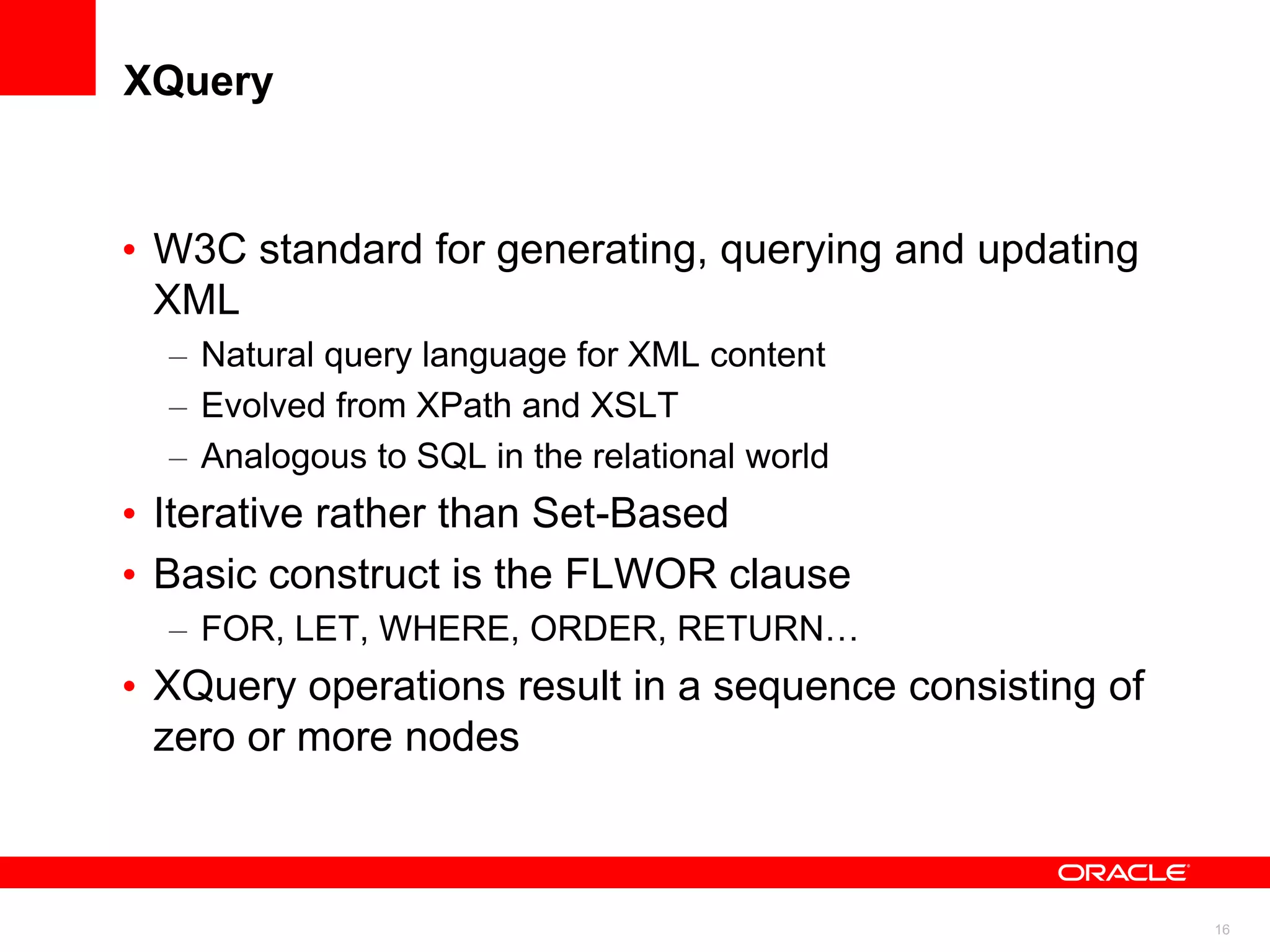
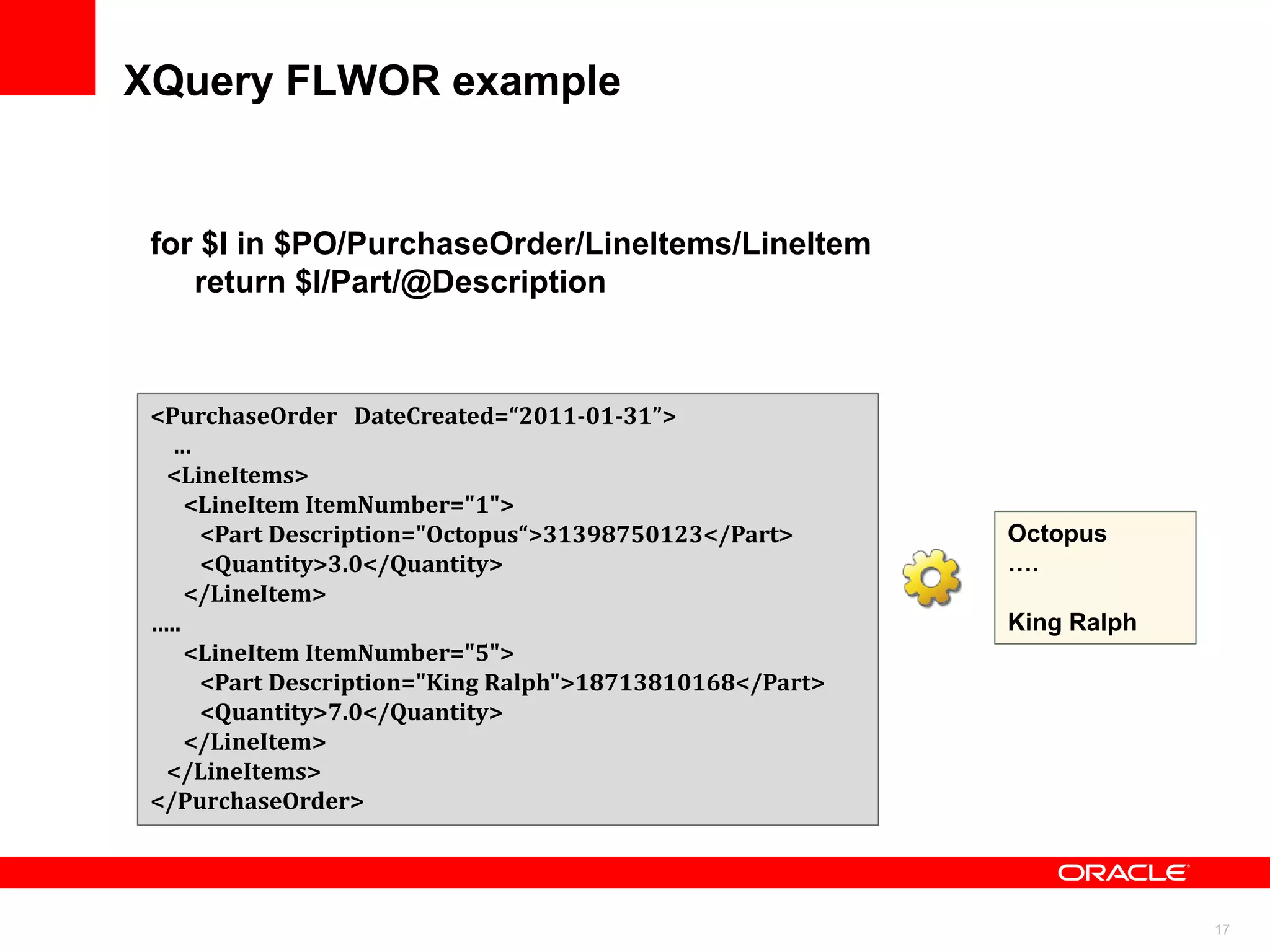
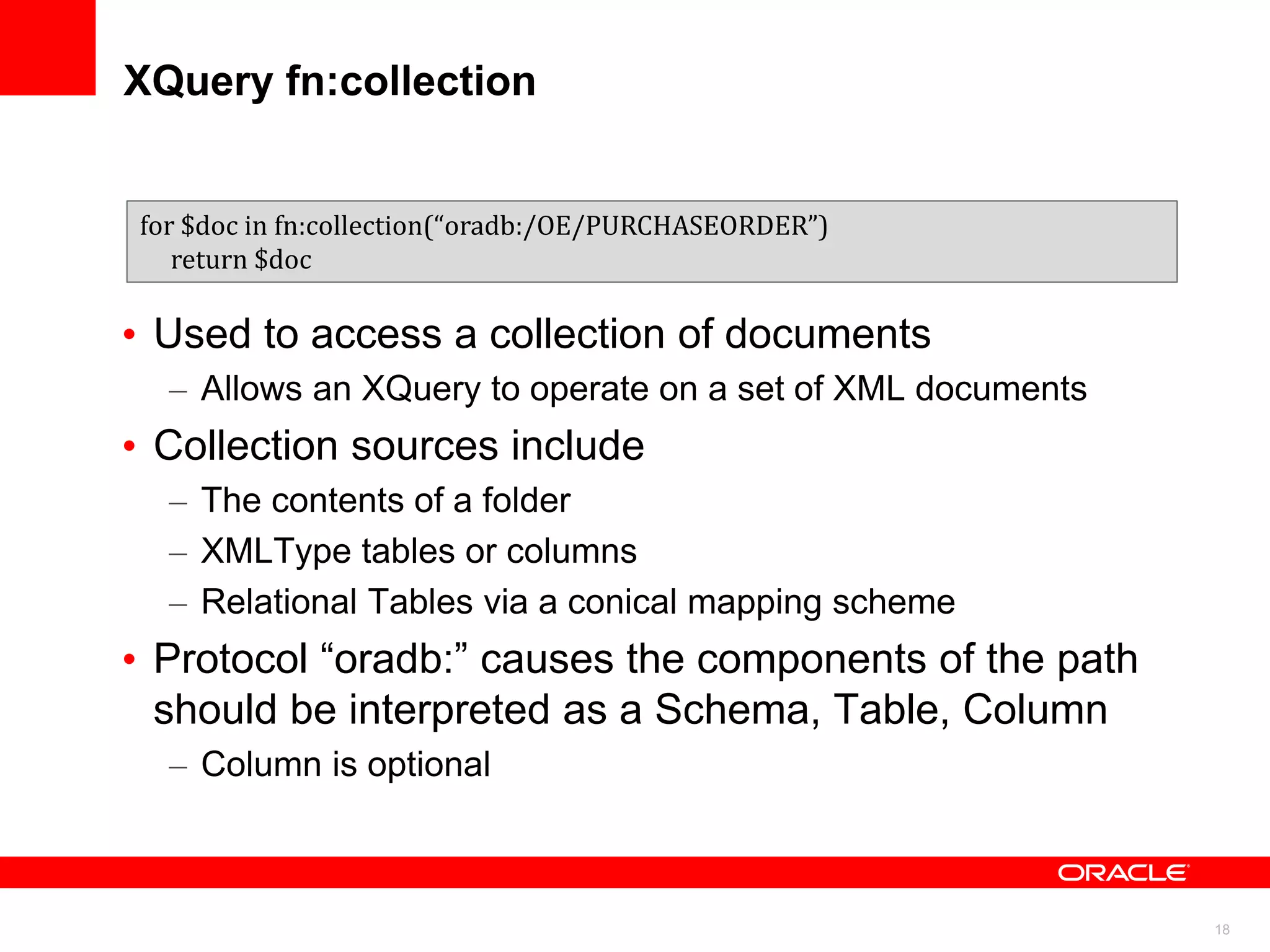
![XQuery : Where and Order by clause let $USER := “SKING” for $doc in fn:collection(“oradb:/OE/PURCHASEORDER”) where $doc/PurchaseOrder[User = $USER] order by $doc/PurchaseOrder/Reference return $doc/PurchaseOrder/Reference • Where clause controls which documents or nodes are processed • Order by clause control ordering of nodes in sequence 19](https://image.slidesharecdn.com/developer-fusion-middleware-1-mark-drake-an-introduction-to-oracle-xml-db-in-oracle-database-11g-release-2pdf1230/75/Developer-Fusion-Middleware-1-Mark-Drake-An-introduction-to-Oracle-XML-DB-in-Oracle-database-11g-Release-2-pdf-17-2048.jpg)
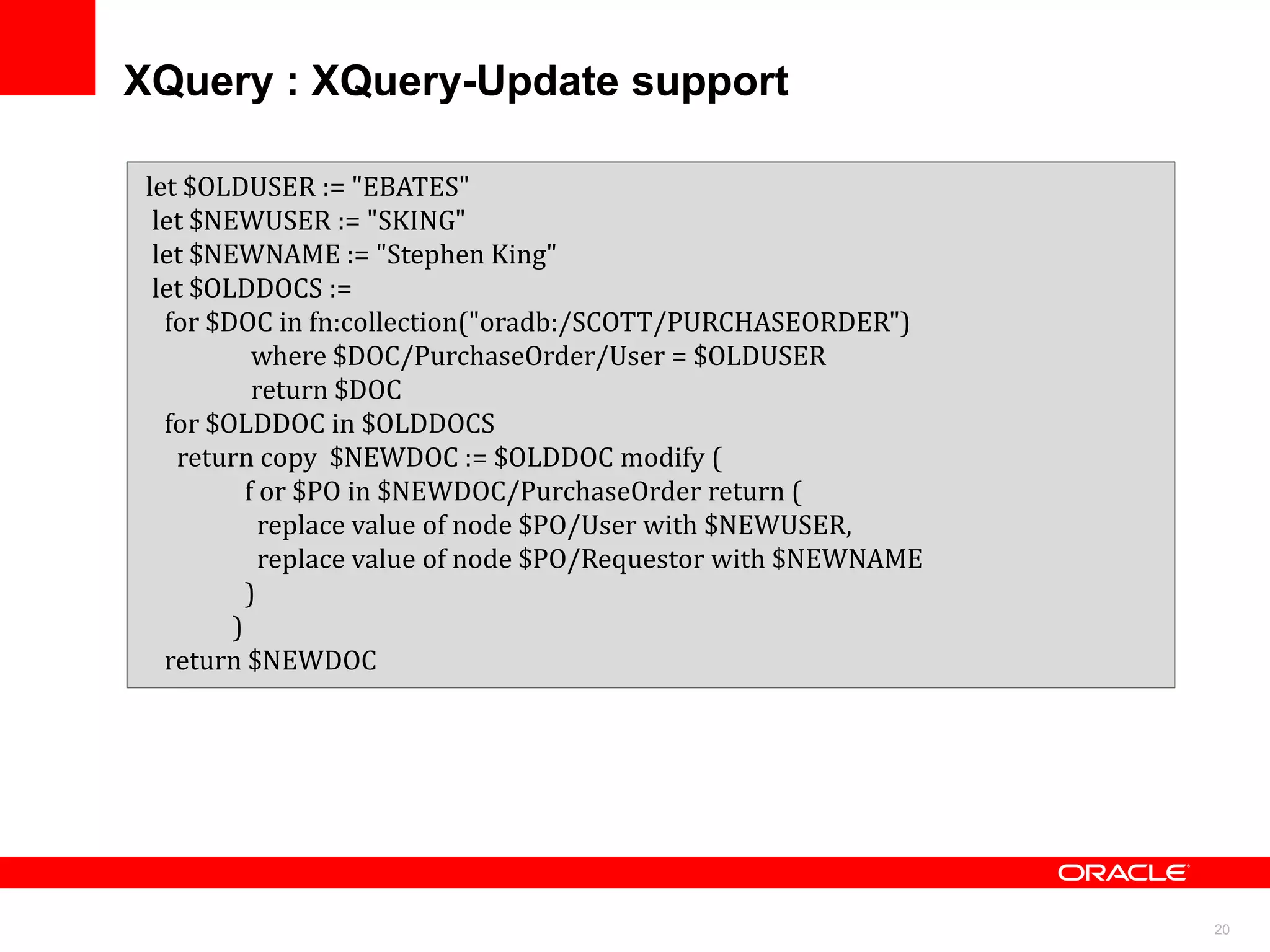
![Executing XQuery in SQL*PLUS using XQUERY SQL> XQUERY 2 let $USER := "SKING" 3 for $doc in fn:collection("oradb:/OE/PURCHASEORDER") 4 5 where $doc/PurchaseOrder[User = $USER] 6 order by $doc/PurchaseOrder/Reference 7 / return $doc/PurchaseOrder/Reference • If XQuery statement ends with ‘;’ use empty comment (: :) to prevent semi-colon being interpreted by SQL. 21](https://image.slidesharecdn.com/developer-fusion-middleware-1-mark-drake-an-introduction-to-oracle-xml-db-in-oracle-database-11g-release-2pdf1230/75/Developer-Fusion-Middleware-1-Mark-Drake-An-introduction-to-Oracle-XML-DB-in-Oracle-database-11g-Release-2-pdf-19-2048.jpg)
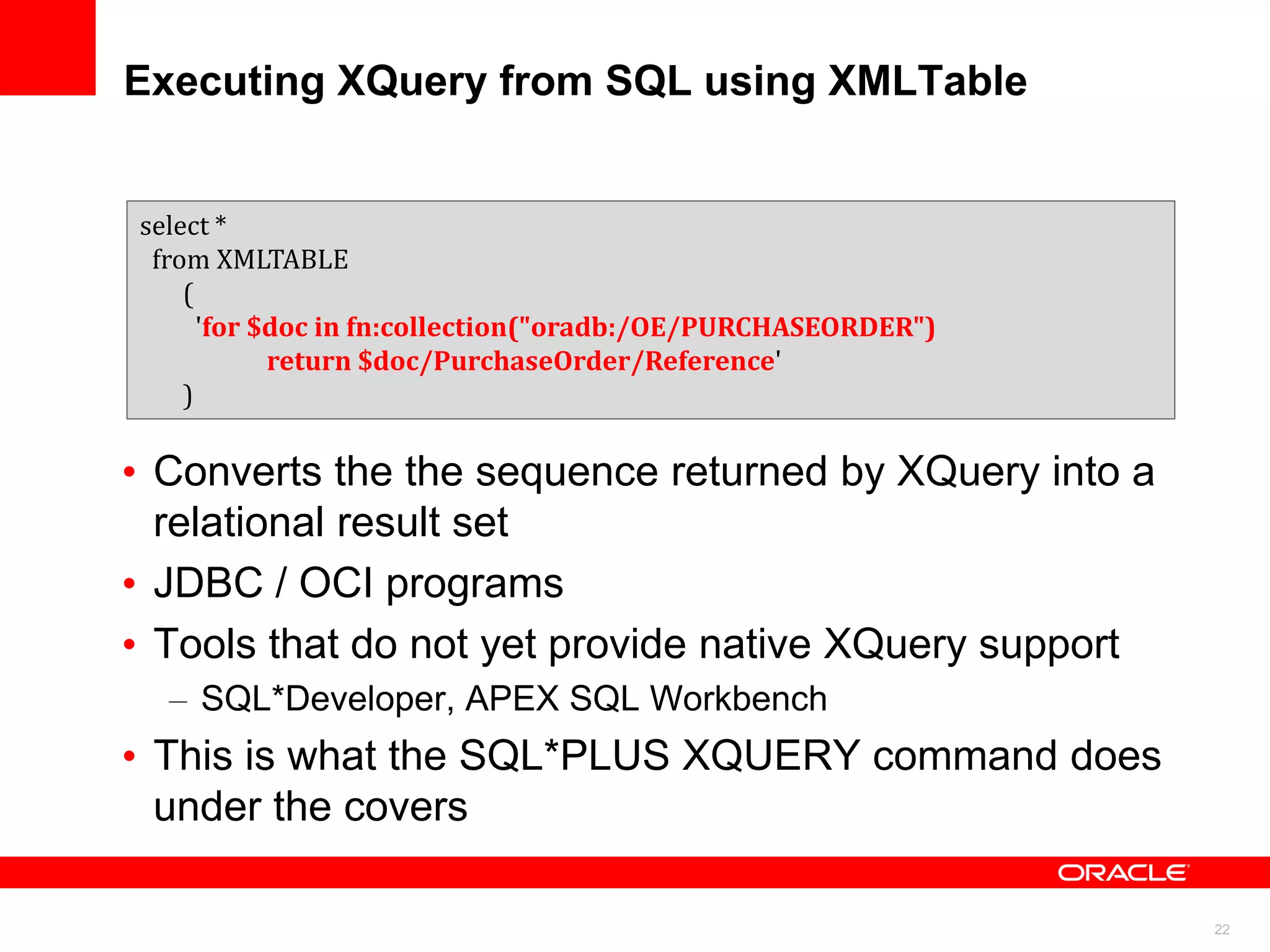
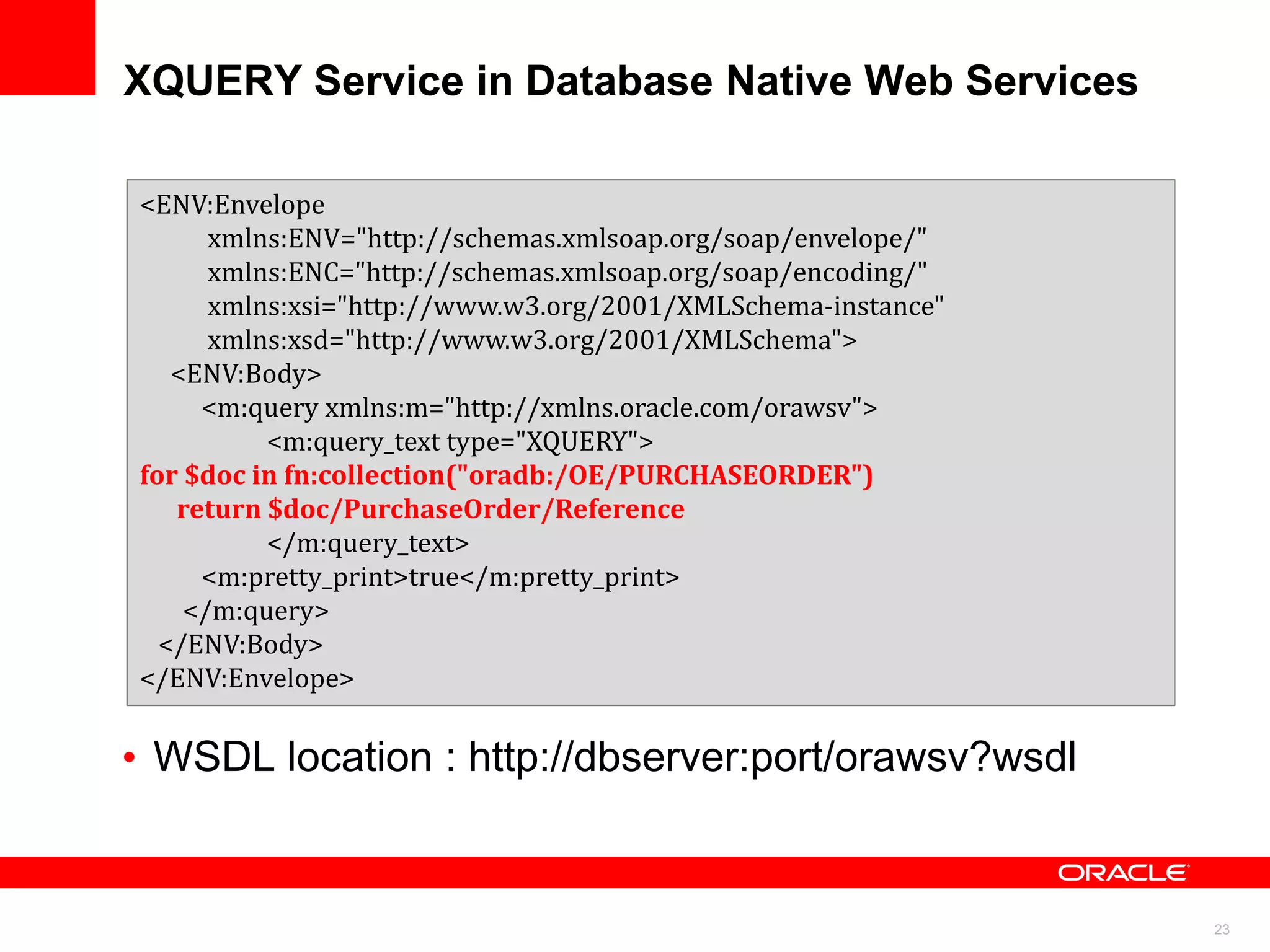
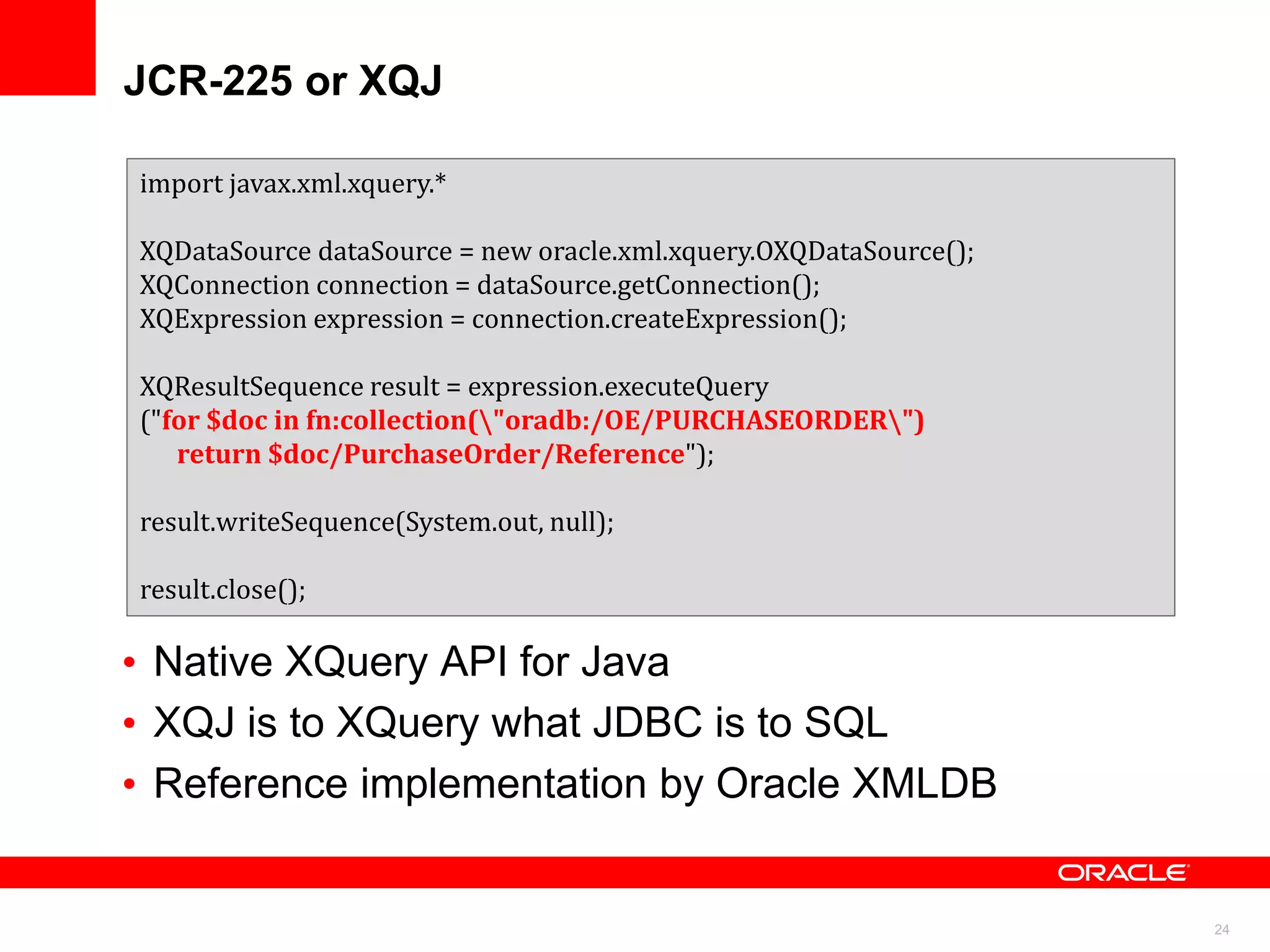
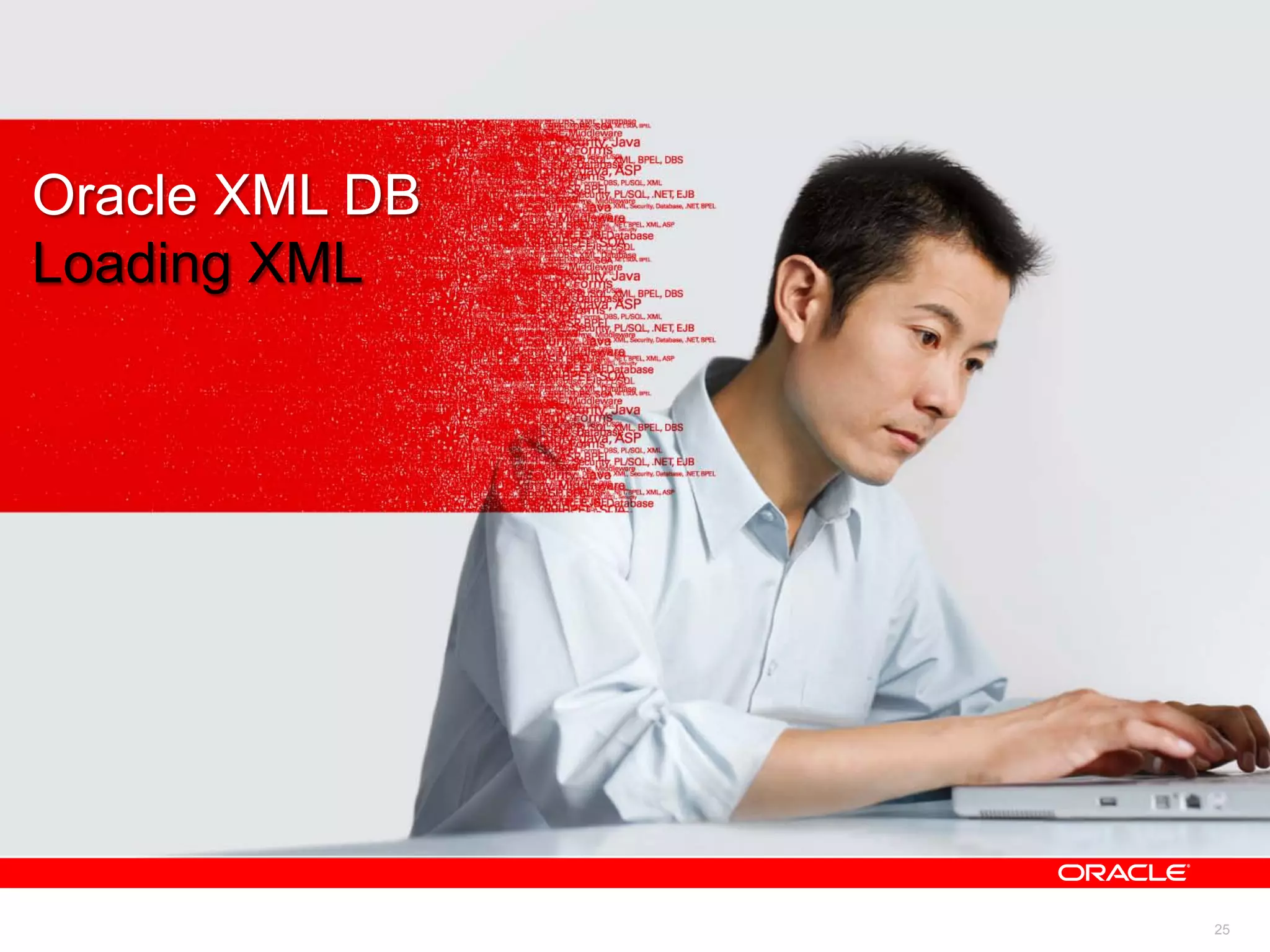
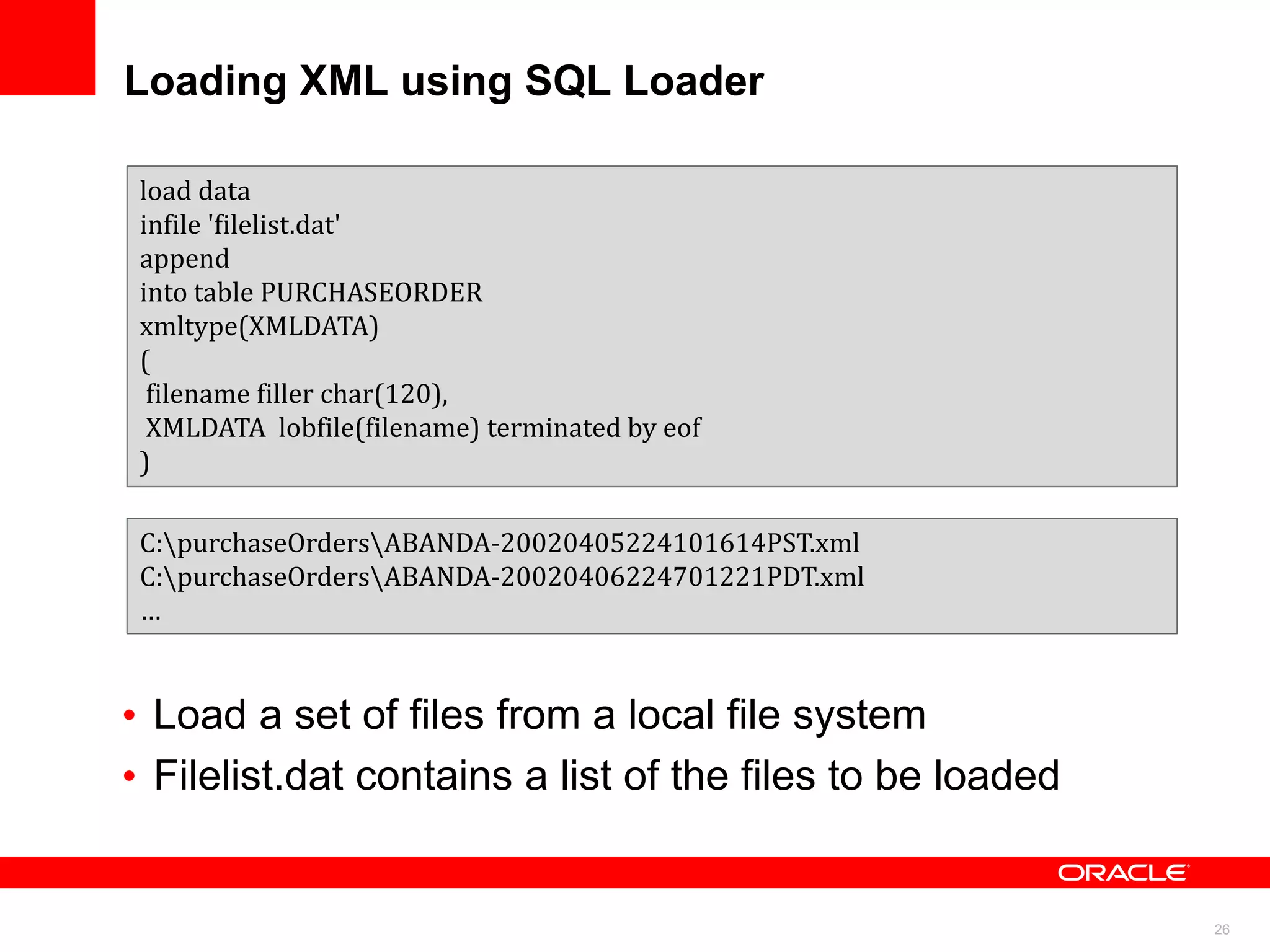
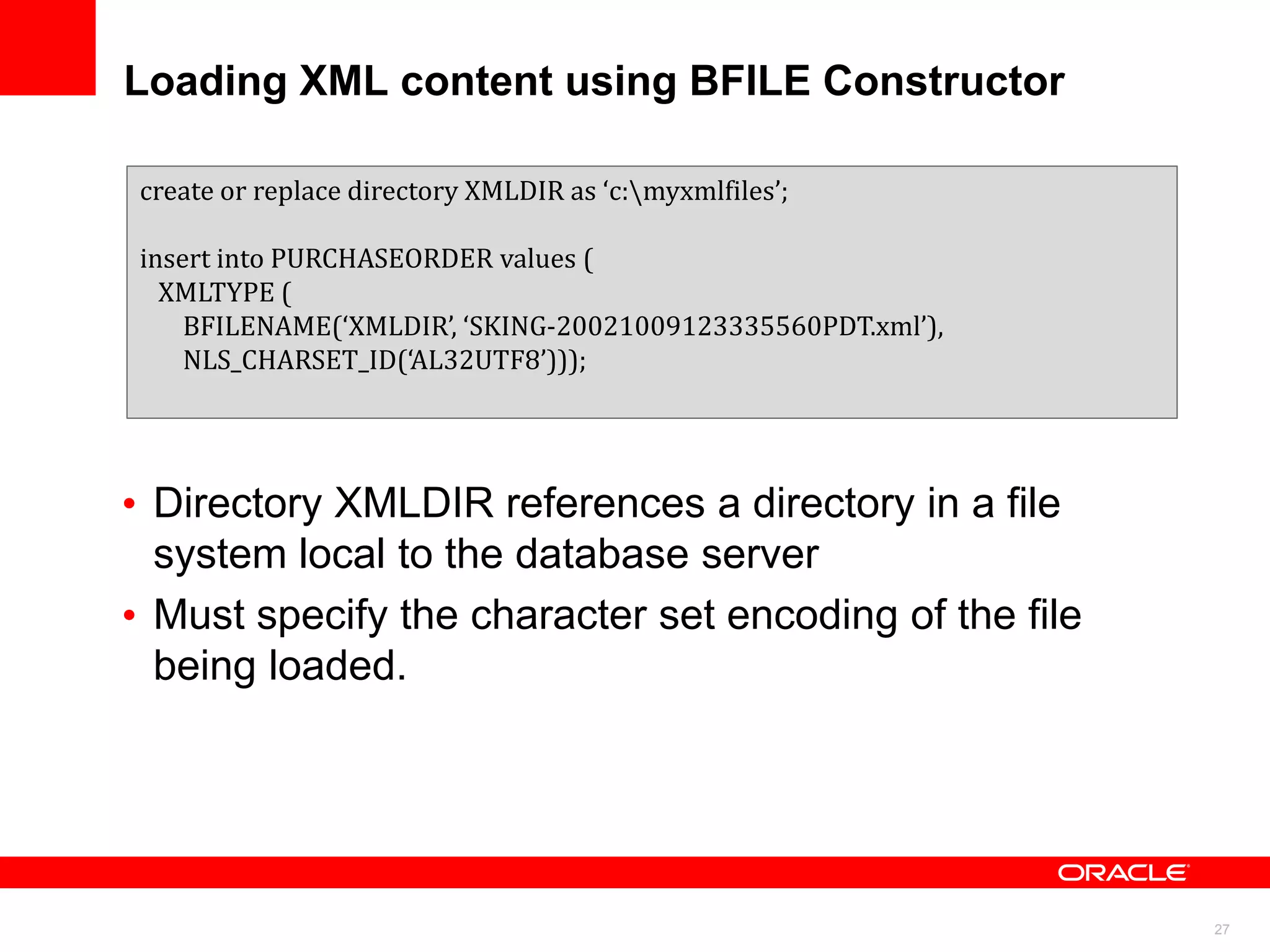
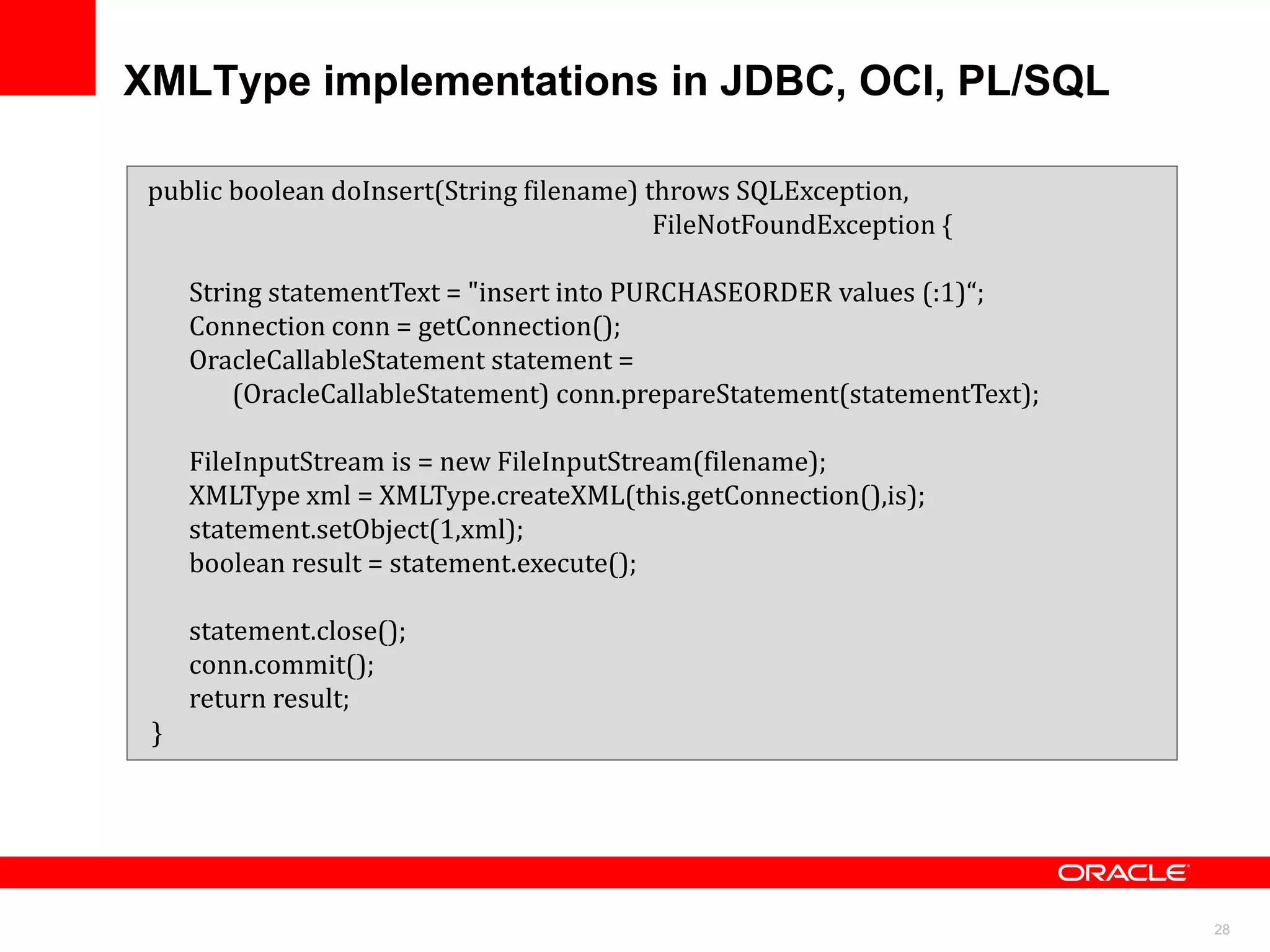
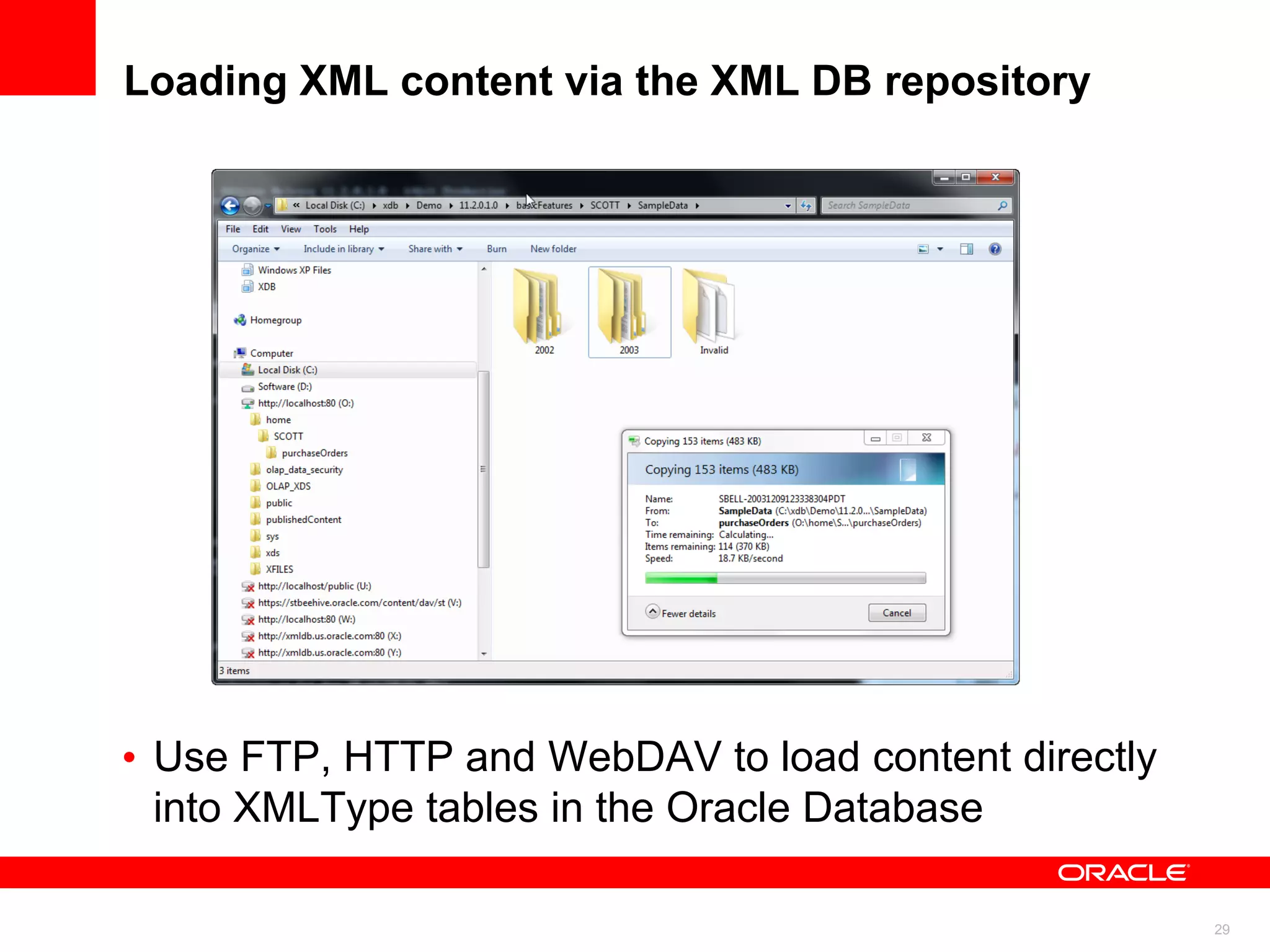
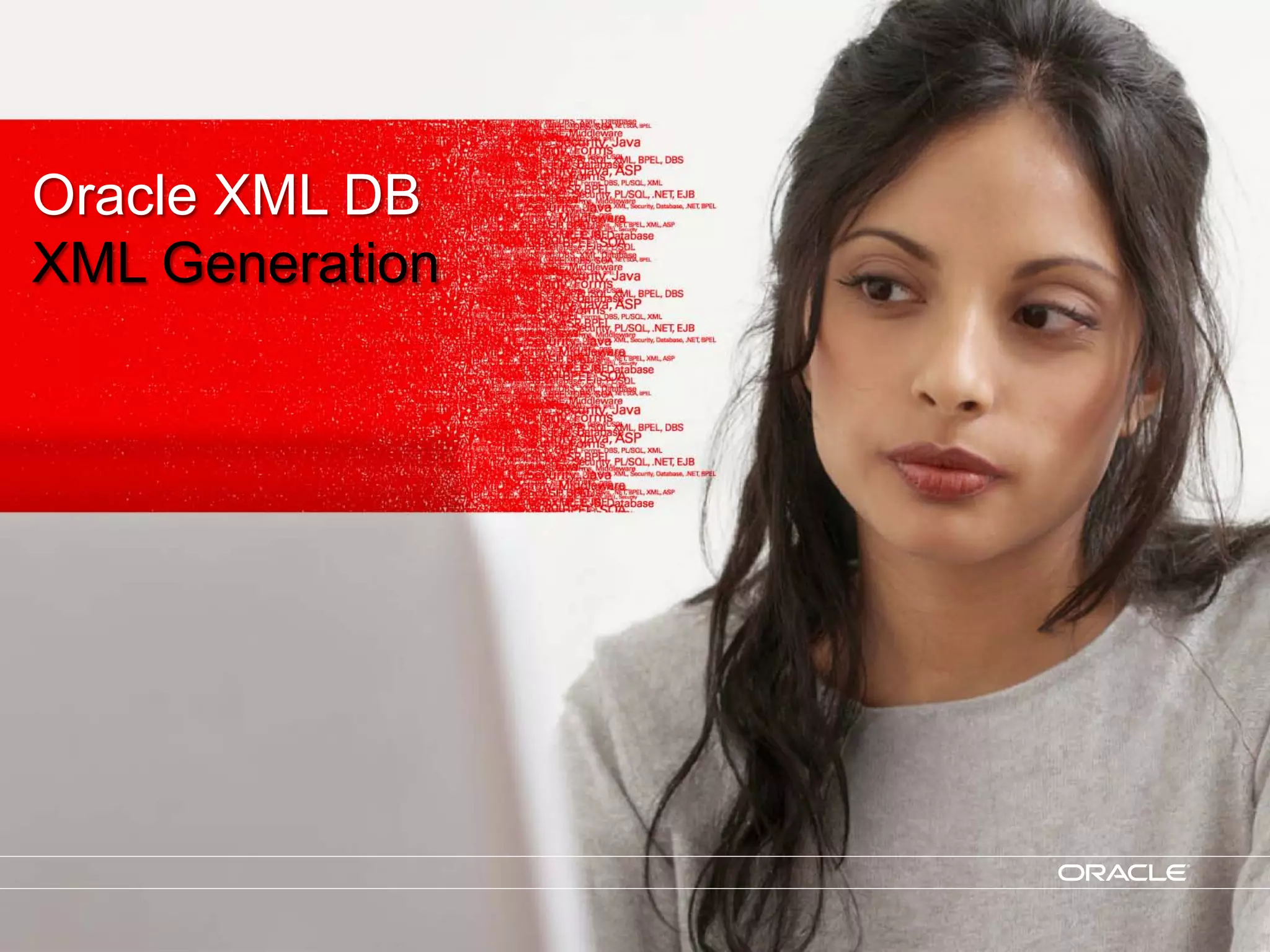
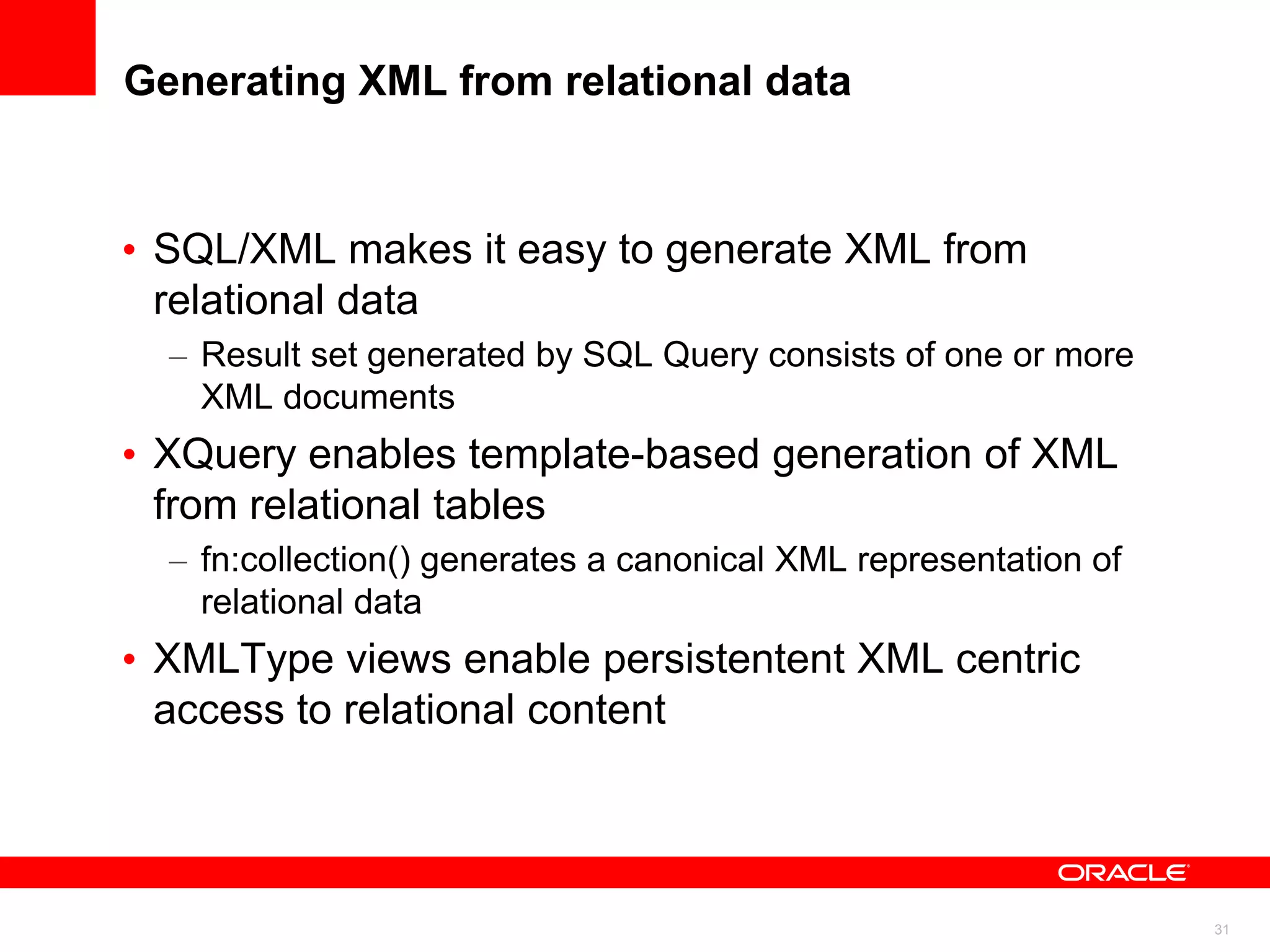
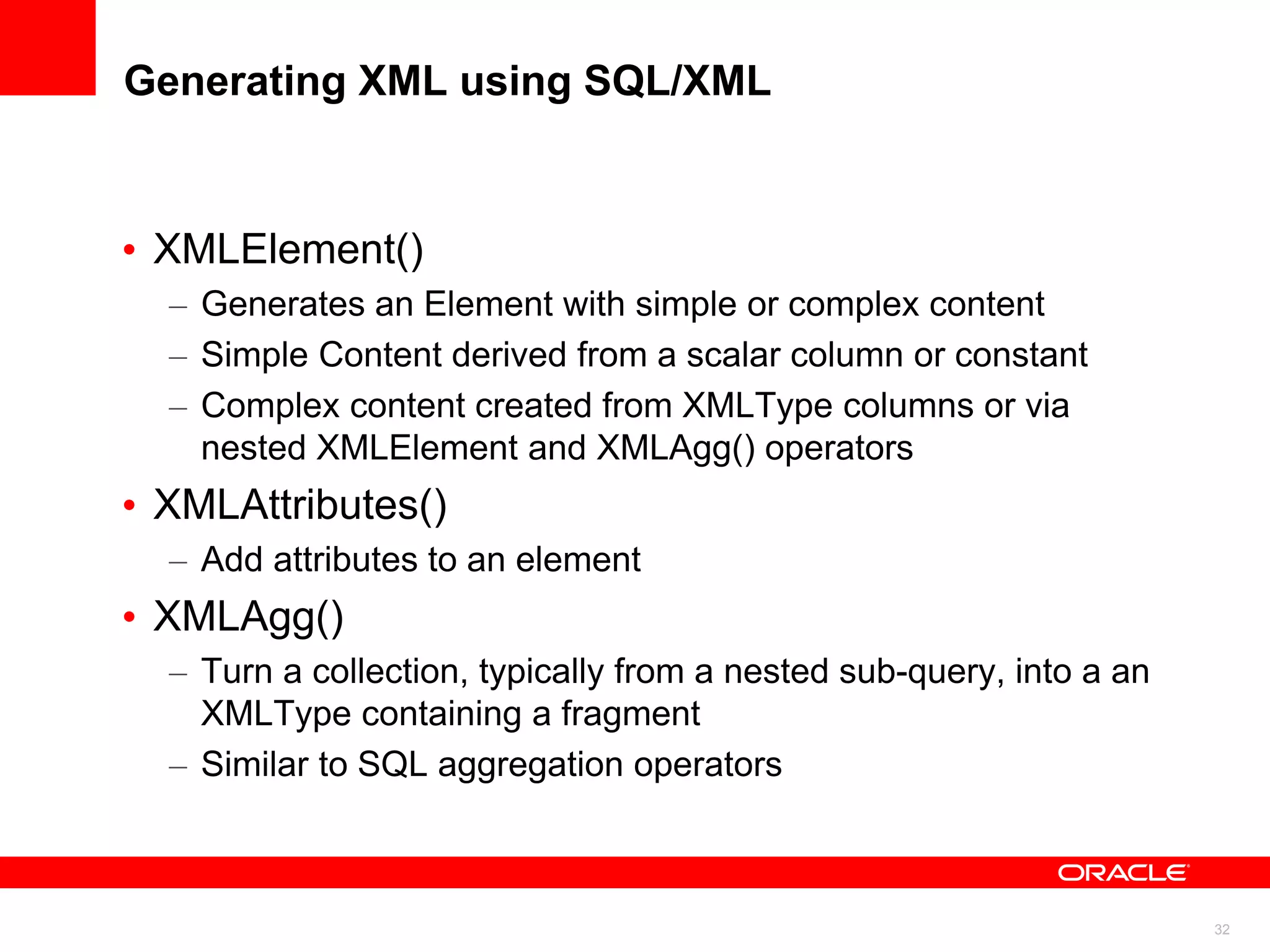
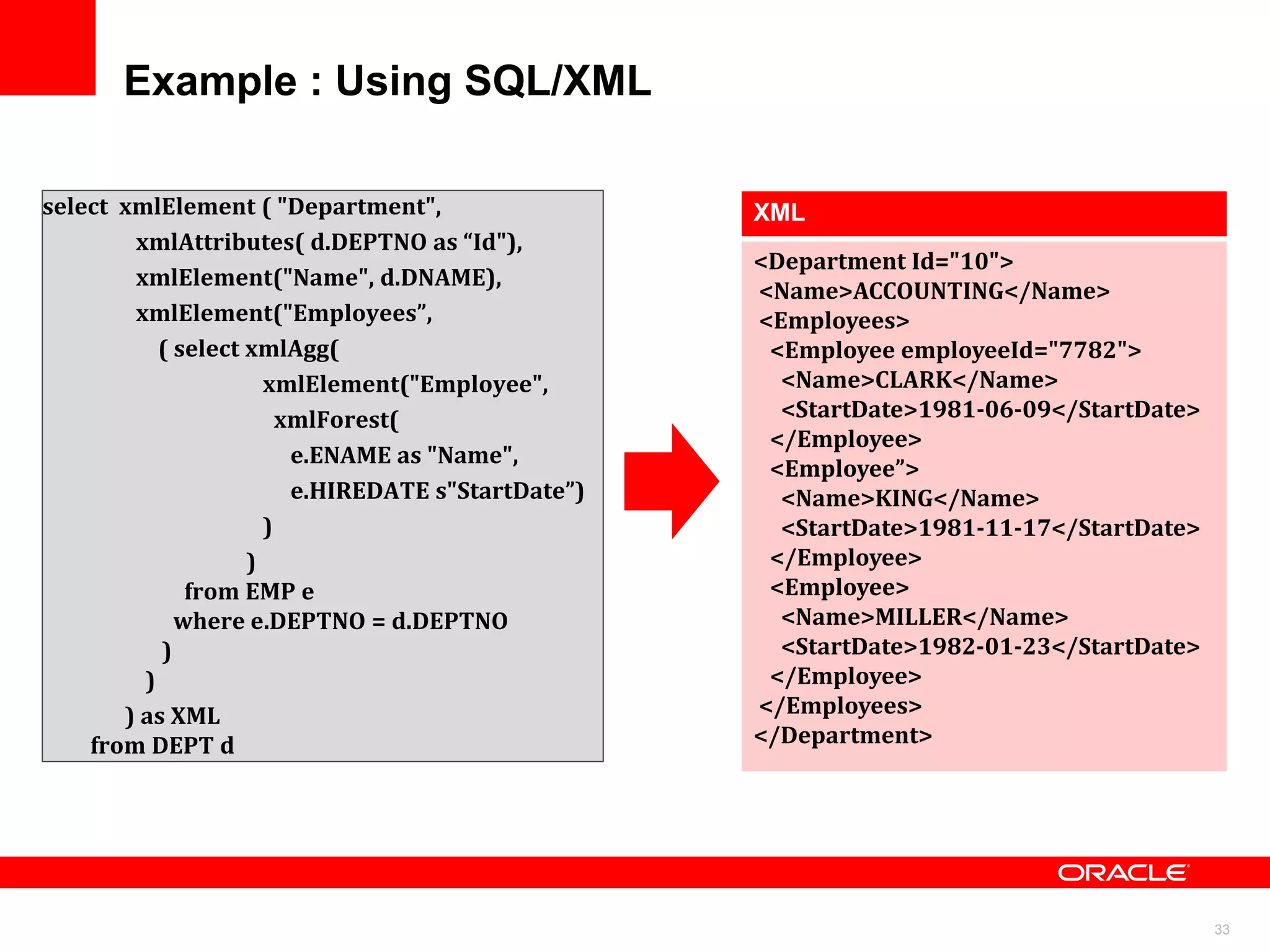
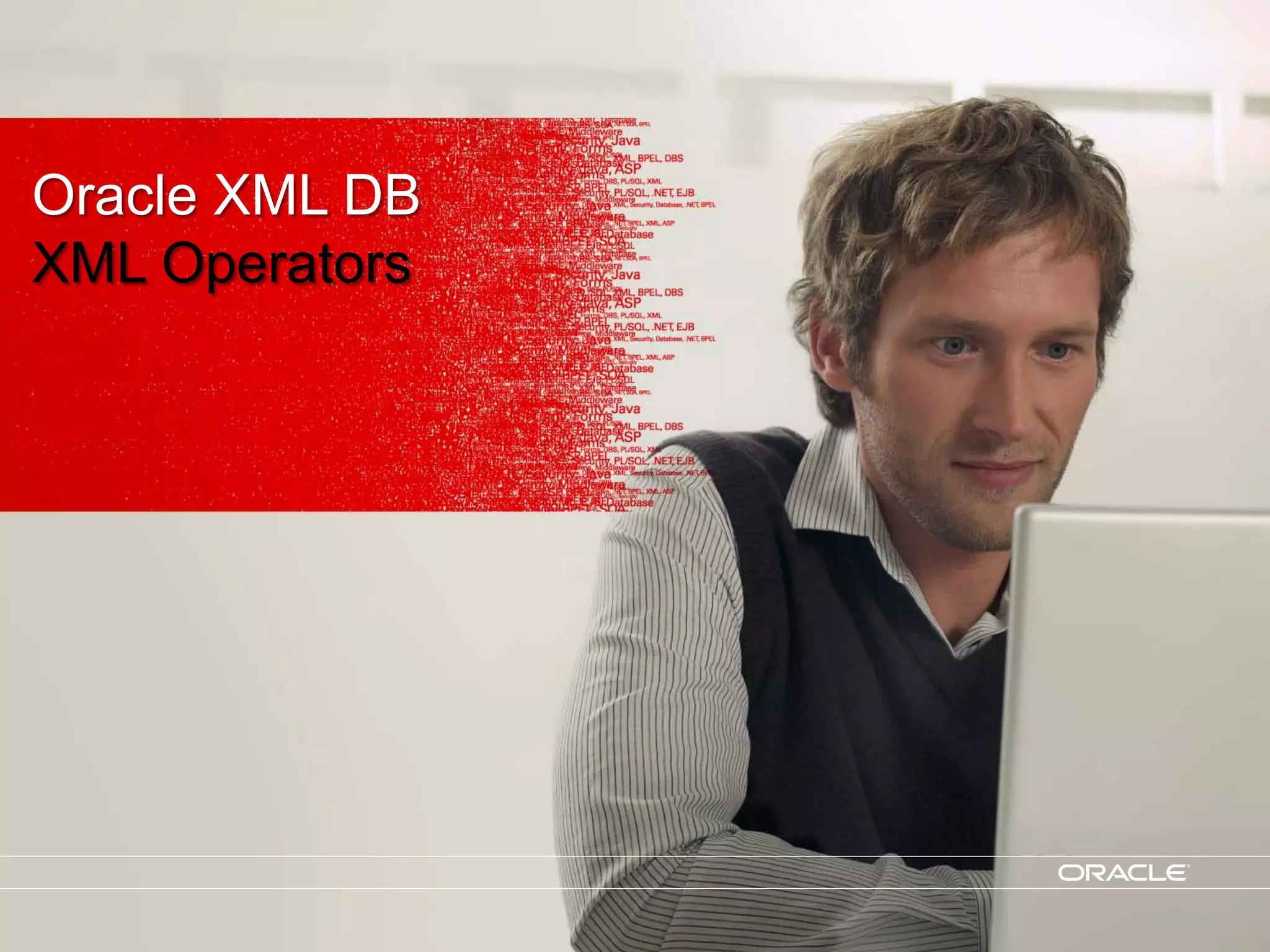
![XQuery operators : XMLExists() SQL> select OBJECT_VALUE “XML” 2 from PURCHASEORDER 3 where XMLEXISTS ( 4 '$PO/PurchaseOrder[Reference=$REF]' 5 passing OBJECT_VALUE as "PO", 6 'SKING-20021009123336131PDT' as "REF" 7 ); <PurchaseOrder > XML <Reference>SKING-20021009123336131PDT</Reference> … </PurchaseOrder > • Use in SQL where clause to filter rows based on an XQuery expression • Bind variables are supplied via the “Passing” clause 35](https://image.slidesharecdn.com/developer-fusion-middleware-1-mark-drake-an-introduction-to-oracle-xml-db-in-oracle-database-11g-release-2pdf1230/75/Developer-Fusion-Middleware-1-Mark-Drake-An-introduction-to-Oracle-XML-DB-in-Oracle-database-11g-Release-2-pdf-33-2048.jpg)
![XQuery operators : XMLQuery() SQL> select XMLQUERY( 2 '$PO/PurchaseOrder/ShippingInstructions' 3 passing OBJECT_VALUE as "PO" 4 returning content) XML 5 from PURCHASEORDER 6 where XMLEXISTS( 7 '$PO/PurchaseOrder[Reference=$REF]' 8 passing OBJECT_VALUE as "PO", 9 'SKING-20021009123336131PDT' as "REF"); <ShippingInstructions> XML <name>Steven A. King</name> … </ShippingInstructions> • Use in SQL where clause to extract a fragment from each document in a result set. • Bind variables are supplied via the “Passing” clause 36](https://image.slidesharecdn.com/developer-fusion-middleware-1-mark-drake-an-introduction-to-oracle-xml-db-in-oracle-database-11g-release-2pdf1230/75/Developer-Fusion-Middleware-1-Mark-Drake-An-introduction-to-Oracle-XML-DB-in-Oracle-database-11g-Release-2-pdf-34-2048.jpg)
